Technology
Apple Aesthetics; A look at the history of iPhone design
Published
1 month agoon


Apple Aesthetics; A look at the History of iPhone Design
years ago, Steve Jobs, at the unveiling ceremony of Apple’s first smartphone, described the iPhone as a device that combines three important technological products: “iPod with a wide screen and touch controls, a revolutionary mobile phone and a disruptive Internet communication device. ».
For several years, Steve Jobs had opposed the proposal of Apple experts to produce a mobile phone, and he clearly said that he did not want to shift the focus of his company from the production of advanced computers to another product that had a completely different market; But over time, the iPhone became a symbol of the technology world and placed Apple in the position of the most valuable company in the world for years.
The first iPhone was popular mainly due to its attractive design, user interface and software. After that, Apple’s constant effort to keep the iPhone at the top of the smartphone sales chart was accompanied by gradual changes in the design of this product, which in some cases affected other manufacturing companies as well.
Stay with Zoomit to review the evolution of Apple’s iPhone design over time.
iPhone 1

The first iPhone was introduced at MacWorld in 2007, and although it wasn’t technically the world’s first commercial smartphone, it laid the foundation for today’s modern phones with a touch screen and full web browsing capabilities. At that time, technology experts believed that Apple had brought the most beautiful industrial design to mobile phones.
The iPhone 1 was a revolutionary device with a 3.5-inch screen, a 2-megapixel camera, and a physical home button. Its stainless steel edges, sleek aluminum body, and minimalist design set it apart from other smartphones of its time, which mostly had physical keyboards and smaller displays.
By introducing the first iPhone, Apple brought the most beautiful industrial design to mobile phones
From another point of view, we can consider the successful design philosophy of the first iPhone generation to be its simplicity and ease of use. Apple’s emphasis on hardware and software integration was evident in the smooth user interface of this device, although it still lacked features such as the App Store and 3G connectivity.
At the time of release, the iPhone 1 entered the market in two configurations of 4 and 8 GB with prices of $499 and $599; Something that is really difficult for us to imagine in 2024.
iPhone 3G and 3GS: the beginning of the App Store

The second iPhone was released in 2008 with the missing piece of the puzzle: the App Store. The Apple Store allowed developers to build their own apps, and the value of the iPhone increased as useful apps and fun games filled Apple’s fledgling digital store.
The name of this phone goes back to the ability to use 3G wireless technology (which was very fast at the time). This device was the first Apple phone that also used GPS.
The iPhone 3G kept the 3.5-inch screen of the iPhone 1; But this time the back panel of the phone was made of plastic. The edges of the device were slightly rounded and provided better ergonomics to users.
A year later, the iPhone 3GS was introduced with a more powerful ARM A8 processor and a frequency of 600 MHz. This device had a longer battery life and a fingerprint-resistant screen coating. Now the iPhone was equipped with a 3-megapixel camera with autofocus, hands-free voice control (a precursor to Siri), and improved video recording.
iPhone 3G found a great position in the market with the introduction of the App Store, 3G wireless technology, and GPS capability.
At that time, the S versions of the iPhone had the same appearance as their peers, with only internal components changed and new software features added.
The storage space of the iPhone in this generation was increased to 16 and 32 GB, and for the first time users received the option of copying and pasting in their mobile phones. iPhone 3G was released in black and white and 3GS only in white.
iPhone 4 and 4S: the age of retina displays

The iPhone 4, introduced in 2010, had a groundbreaking design with a 3.5-inch Retina display with a resolution of 960 x 480, a much higher resolution than previous models. The back and front of the phone were made of flat glass, and the stainless steel frame gave the device an industrial and modern look.
Another significant difference between the iPhone 4 and the previous generation was the design of separate and round volume buttons on the left side of the device. The phone’s edges were removed from the crescent shape and became more square so that Apple could make the “thinnest” smartphone of its time.
iPhone 4 was the thinnest smartphone of 2010
iPhone 4 introduced users to several important elements, including the front camera and FaceTime. The main camera of the phone was also upgraded to 5 megapixels with LED flash.
The iPhone 4S was announced by CEO Tim Cook on October 4, 2011, a day before Steve Jobs’ death. This new model significantly increased speed with a new chip and introduced Siri for the first time. The process of improving the user experience of the camera continued with the upgrade to 8 megapixels and the introduction of the ability to take pictures using the volume control button.
iPhone 5 and 5S: more elongated design
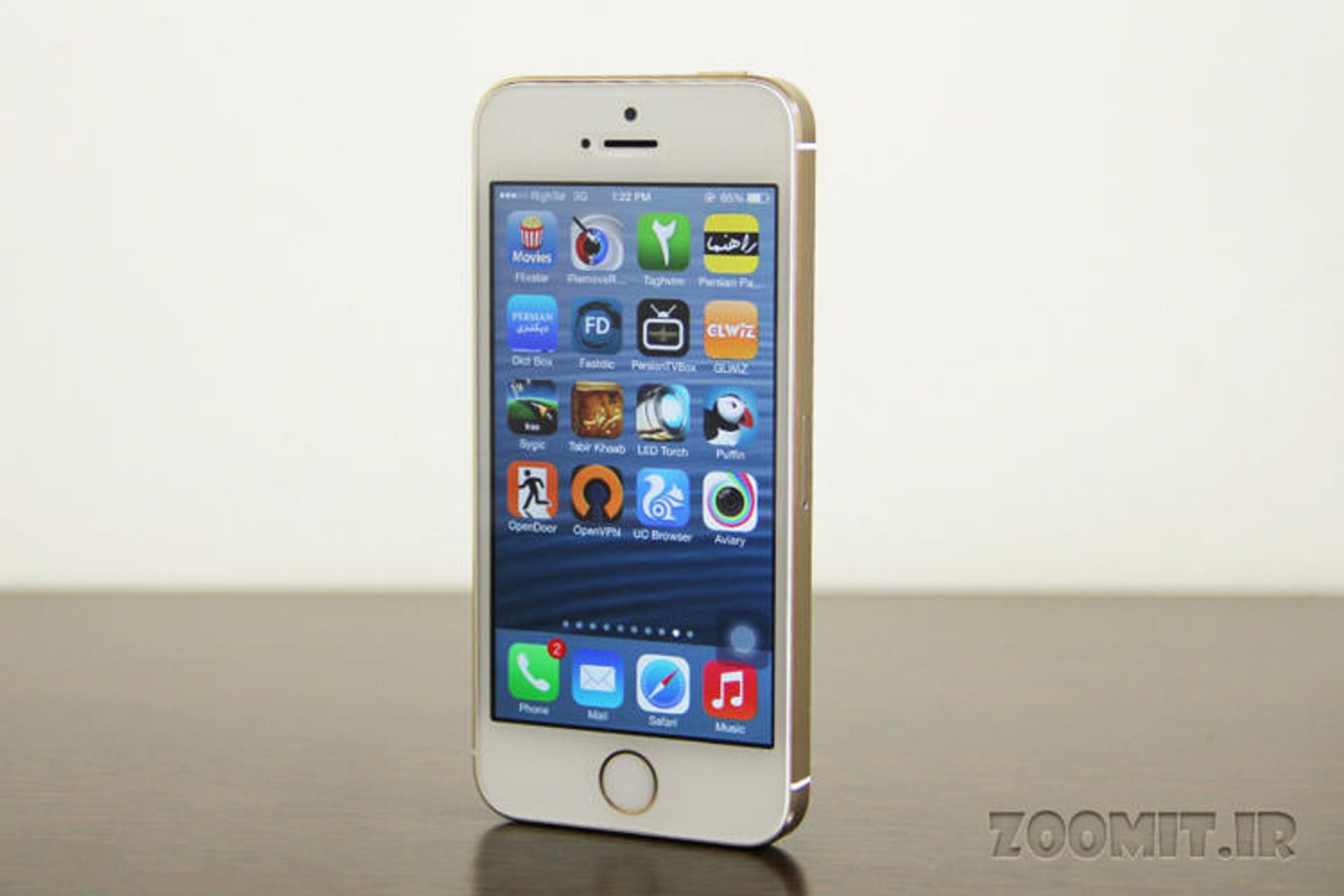
The second major iPhone redesign was in 2012 with the introduction of the iPhone 5 with a 4-inch screen. In this era, the smartphone market was inclined towards large screens. However, the iPhone 5 was still a decent size and could be easily carried with one hand. This phone was made of aluminum chassis, which made the device light and of course durable.
The iPhone 5 also introduced a reversible Lightning connector that replaced the old 30-pin port. This phone was 20% lighter and 18% thinner than the iPhone 4S.
iPhone 5S and 5C were released in 2013. The 5S was presented with the same design as the iPhone 5, but replaced the home button with Apple’s fingerprint scanner known as Touch ID. This feature was so impressive that it became a standard feature of the smartphone industry.
The screen ratio of 16:9 in iPhone 5 was enthusiastically received by users
Steve Jobs believed that a 3.5-inch screen was very suitable for a smartphone and admitted that no one would ever buy a larger phone. But contrary to his idea, the 4-inch screen for the first time in iPhone 5 was able to establish a 16:9 screen ratio and satisfy more users with a better display of iTunes content.
While the black version of this device looked very uniform and monochromatic, the white model was accompanied by silver edges. In this generation, the headphone jack moved to the bottom of the device and the design of the connecting cable in iPhone 5 made many accessories obsolete.
The iPhone 5C was a design setback for Apple. With the production of this iPhone, Apple returned to the time of 3GS and made a plastic smartphone again. Considering the lower price of this smartphone, Apple did not even equip it with a Touch ID sensor.
iPhone 6 and 6 Plus: entering the realm of phablets
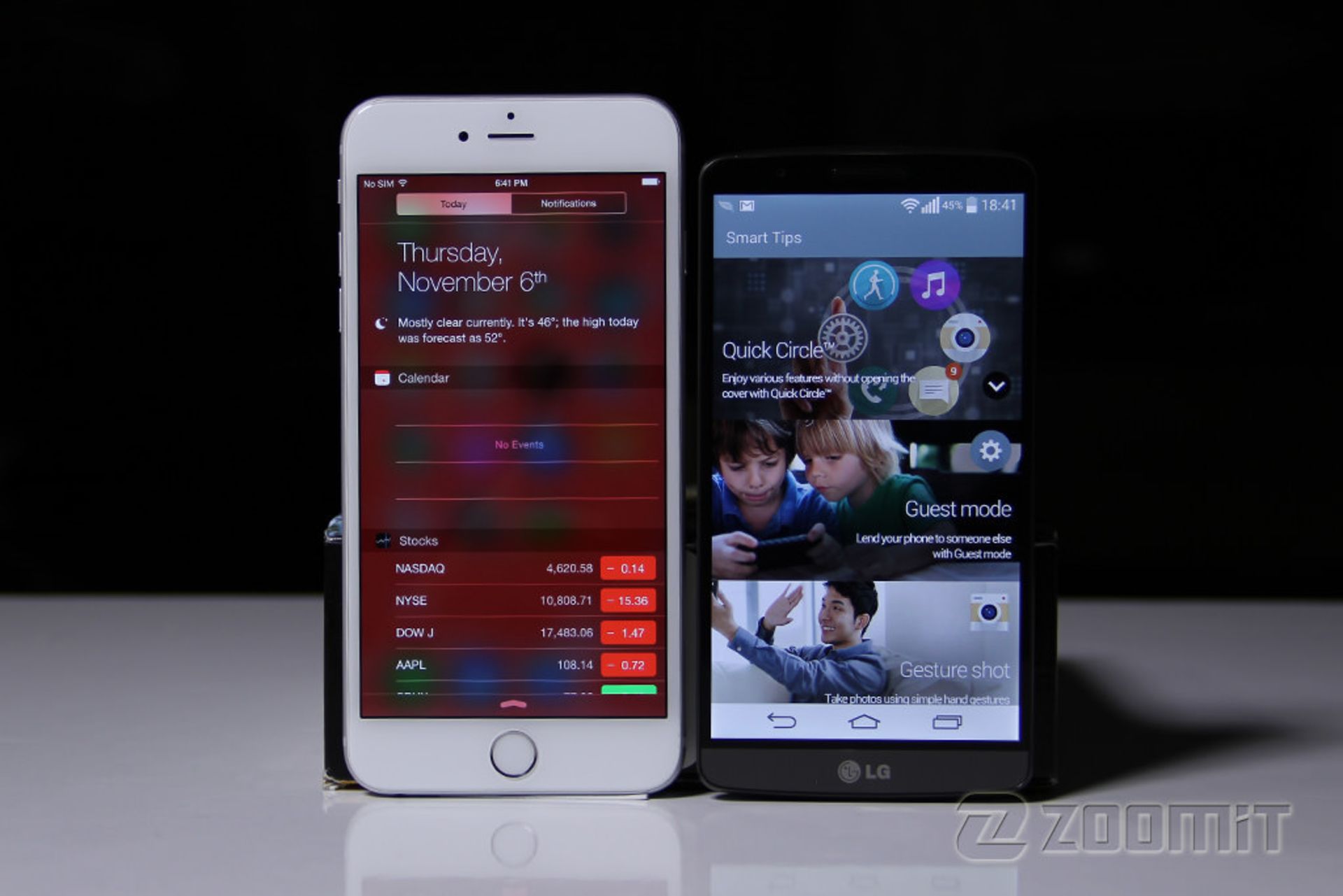
In 2014, Apple entered the phablet market with the release of the iPhone 6 and iPhone 6 Plus with 4.7 and 5.5-inch screens. These phones use a higher quality aluminum body like the previous generation iPhones. The edge of the phone was no longer flat and with a slight curve, it had better ergonomics. The screen resolution was also increased to 1334 x 640 in iPhone 6 and 1920 x 1080 in 6 Plus.
In addition to the larger screen, the iPhone 6 was heavier and thinner than the iPhone 5S, weighing 129 grams and 6.9 mm thick. In this series, the power button was moved from the top of the device to the right edge and the front panel was covered with 2.5D Gorilla Glass. Also, the home button with the fingerprint sensor was visible at the bottom of the screen.
iPhone 6s and 6s Plus: 3D touch innovation
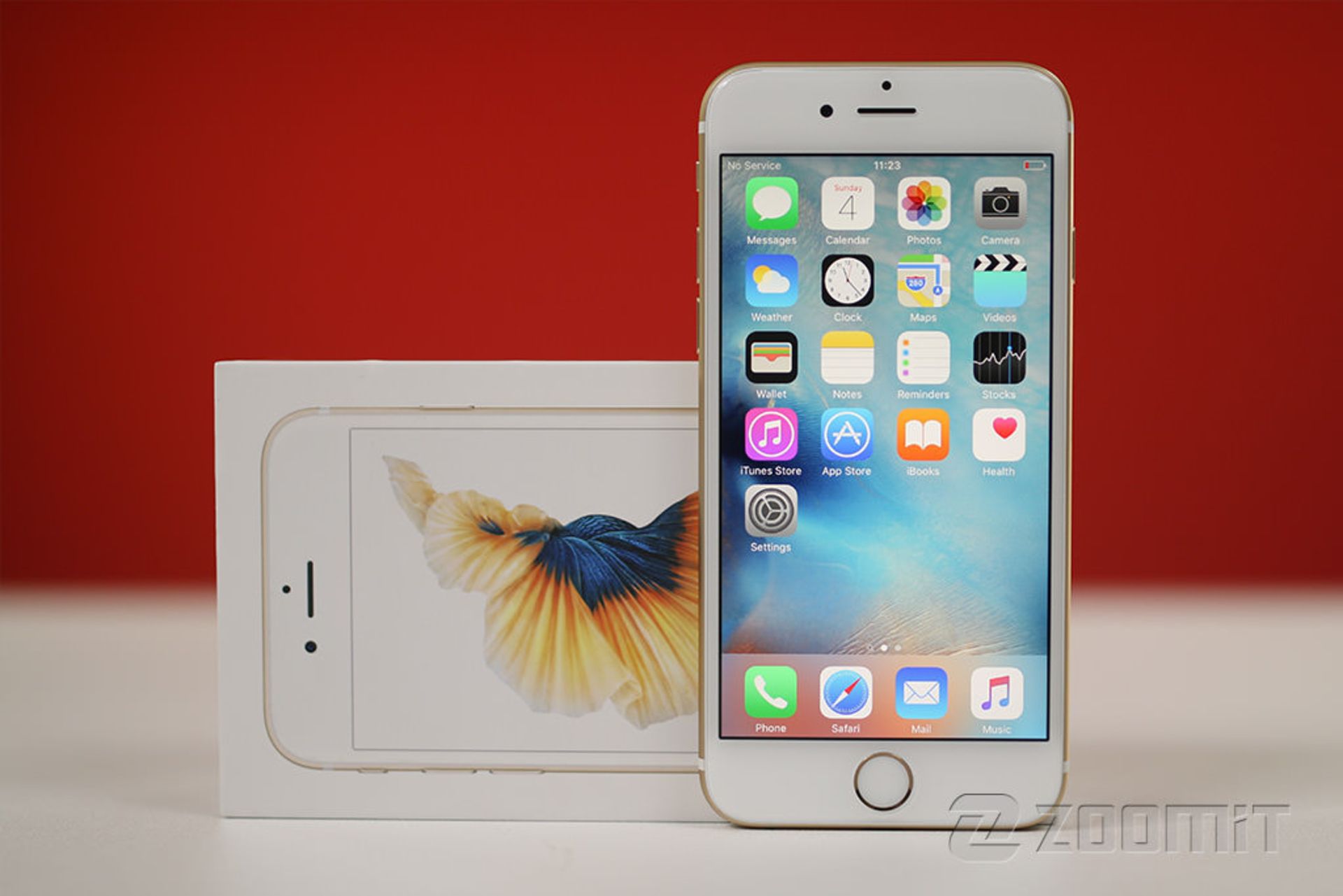
In the iPhone S6, Apple added a pressure-sensitive display called 3D Touch, which allowed users to quickly and easily access menus and previews by pressing the screen.
iPhone S6 with 3D touch enabled more visual interactions and versatility
This innovation added the possibility of visual interactions and more versatility to the device. Although 3D touch seemed like a smart feature, it was removed from iPhones four years later due to the complexity of learning.
A stronger aluminum alloy has addressed concerns about the iPhone 6 bending, and improved camera quality has made the iPhone 6s and 6s Plus a more attractive option for photography enthusiasts. Apple also introduced ApplePay with the iPhone 6 series.
iPhone SE

In 2016, Apple surprised many of its fans with a new name for its mid-range phone: the iPhone SE, priced at $399, looked very similar to the iPhone 5S two and a half years ago; But it was equipped with new hardware and a faster processor.
It was Apple’s first real attempt at an affordable phone since the not-so-cheap iPhone 5C. The four-inch screen was great for people who weren’t ready for larger phones yet, but it was clear that Apple was going to focus on wider screens in the future.
The phone still retains the 12-megapixel iSight camera, 4K video support, and Touch ID.
iPhone 7 and 7 Plus: Say goodbye to the headphone jack

The design of the iPhone 7 series was not much different from the previous generation. The weight reduction of the iPhone 7 and iPhone 7 Plus compared to the 6 series was not very noticeable, but the home button was changed from a physical mode to a touch mode and provided a better experience to users with IP67 waterproof and dustproof certification.
Apple called the removal of the headphone jack in the iPhone 7 brave
Among the other changes in the iPhone 7 series, we can mention the change in the location of the antenna strip and the appearance of the camera lens, but undoubtedly the most important bold and controversial move by Apple was the removal of the headphone jack. The move required users to either use Bluetooth headphones or connect to the Lightning jack, something Apple called “bravery” and critics called the company’s “arrogance.”
With the removal of the headphone jack, people who wanted to charge their phones and use wired headphones at the same time had to buy a special adapter. In these models, we also saw stereo speakers and dual cameras, as well as slight improvements in the chip and speed.
iPhone 8 series: generation in the Shadow
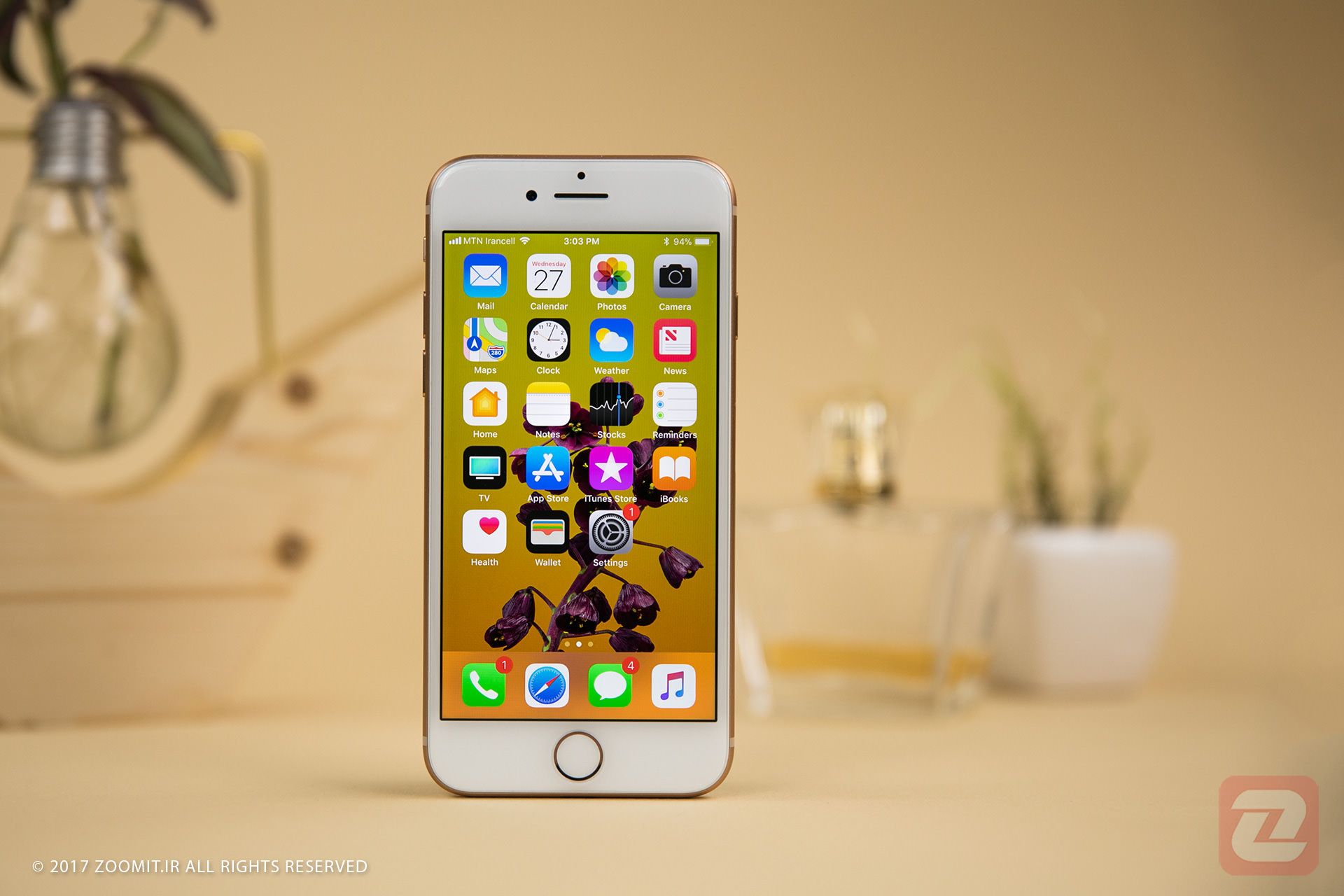
iPhone 8 and iPhone 8 Plus were not Apple’s revolutionary products to celebrate the 10th anniversary of the iPhone. These models were introduced in 4.7 and 5.5 inches, with upgraded cameras and processors. The panel behind them was also completely made of glass, which, although it was more vulnerable, enabled Apple’s new wireless charging system.
The rounded corners, volume control keys, camera bump, Lightning port, and thick bezels of the display were similar to the previous generation. Also, the home key for touch integrated with Touch ID was also located on the bottom edge of the screen.
iPhone 8 Plus with advanced dual cameras and 2x optical zoom became popular among the audience
The iPhone 8 Plus was popular among the audience mainly because of its advanced dual cameras with 2x optical zoom, portrait mode and augmented reality along with True Touch technology.
Apple placed the iPhone 8 series in the shadow of another new product that was supposed to be the company’s first thousand-dollar phone: the iPhone 10.
iPhone 10: The New Era of Design

Apple’s real gift to celebrate the company’s 10th anniversary of smartphones was the iPhone 10, which was introduced at the same time as the iPhone 8 series. This phone with a 5.8-inch old screen and a minimal border, with a completely new chassis made of stainless steel, changed the visual format of all previous generations.
The home button in iPhone 10 was removed and instead of the fingerprint sensor, biometric Face ID was added to the phone. Animoji characters came to iMessage and battery life and camera quality improved significantly.
Apple called the iPhone 10 display an “all-round display”. There was no news of the previous thick borders and the phone’s sensors and cameras were seen in the narrow strip above the screen.
The design of the iPhone 10, with minimal borders and the removal of the physical home button, became the most advanced smartphone design of the year
With dimensions of 7.7 x 70.9 x 143.6 mm, the iPhone 10 was only slightly taller, wider, and thicker than the iPhone 8, and with its weight of 174 grams, it was significantly lighter than the iPhone 8 Plus and heavier than the iPhone 8.
iPhone 10 entered the market with front and back glass panels in gray and silver colors. It is noteworthy that the performance of Apple’s face recognition system or Face ID technology was made possible with the A11 processor and thanks to the support of the neural network engine.
But along with all these changes, Apple also successfully tested the price factor in the mobile market: maybe if this thousand-dollar iPhone did not meet such a high demand, this price (which seemed amazing at the time) would forever be based on the price of flagship phones. He did not become intelligent.
iPhone XS, XS Max, and iPhone XR: Minor improvements and more variety

In 2018, iPhone 10S and iPhone 10S Max were introduced as improved versions of the iPhone 10. Until now, Apple was in the field of producing large-sized phones; It was slower than other tech companies, but with the iPhone 10 Max, it finally brought a 6.5-inch screen to its products.
In both models, by removing the physical home button, the display quality, battery life, and camera increased.
The iPhone XR was supposed to play the same role as the iPhone 5C. In this affordable model, Apple replaced the premium stainless steel frame of the iPhone 10S with colorful aluminum, leaving out the telephoto camera and 3D Touch. Also, despite the relatively lower price, thanks to the 6.1-inch Liquid Retina display and True Tune technology, it provided users with a satisfactory visual experience.
All three iPhone models of 2018 were presented with the A12 Bionic processor and face recognition or Face ID, and in a way the era of fingerprint sensors ended.
iPhone 11 series: permanent arrangement of cameras
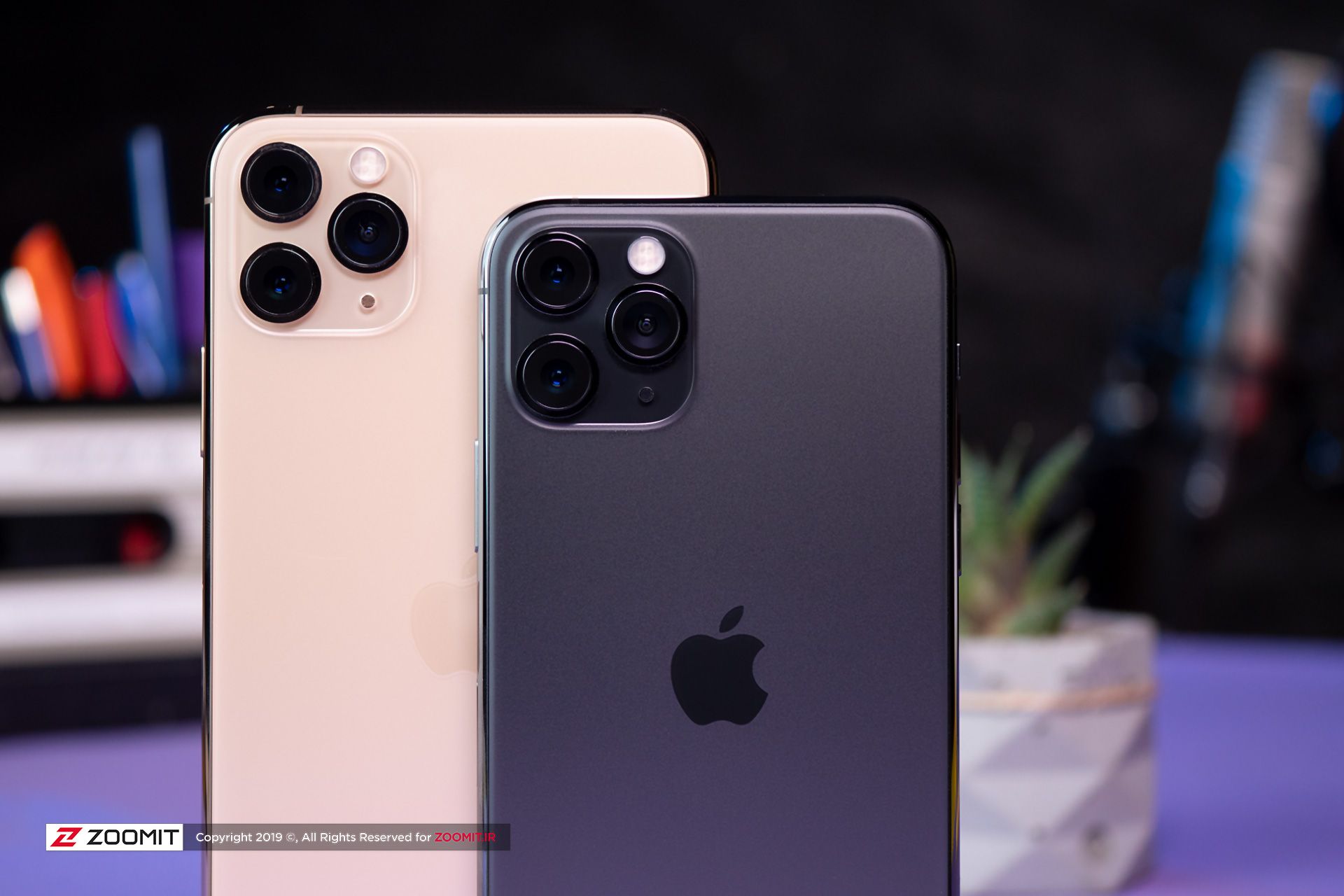
The iPhone 11 series launched in 2019 mainly focused on camera improvements and introduced a triple camera system in the Pro models.
Apple made the design of the iPhone XR the main design base of the iPhone 11 series. With a new ultra-wide camera, this set allowed users to cover a wider area in one shot.
The iPhone 11 Pro was very similar to the iPhone 10 with rounded corners and very narrow edges and a 5.8-inch screen. The front and back panels of the phone were made of glass and its frame was made of stainless steel, but this time the matte body replaced the shiny body.
iPhone 11 Pro Max with Super Retina XDR display introduced the brightest display to the smartphone market.
The special arrangement of the triple cameras of this model became controversial at that time: the three rear camera modules were placed in a triangular shape along with the LED flash on the protrusion of the body, and the increased capacity and battery life slightly increased the weight of the device.
As in the previous generation, the Side Button was on the right edge of the frame and the notification slider and volume control keys were seen on the left edge, with the difference that Apple brought the buttons a little lower than before and made them easier to access.
iPhone 11 Pro Max with a 6.5-inch screen was considered the largest phone of this series. According to Apple, iPhones now offer users the brightest display among smartphones by using the Super Retina XDR display.
An important and significant point of late was the removal of 3D touch from the iPhone 11 series. iPhone 11 Pro was released with an 18-watt fast charger and a USB-C Lightning cable. Also, for the first time, we saw the dark green color in the colors of the phones.
In general, the matte glass cover gave a premium feel to the Pro models, while the vivid colors of the standard iPhone 11 model attracted more audiences.
iPhone 12 series: 5G and flat edges

The 2020 iPhone 12 series was introduced with an exciting milestone: support for 5G connections that took internet speeds and network performance to a whole new level. iPhone 12 and iPhone 12 Pro with 6.1-inch screen, iPhone 12 Pro Max with 6.7-inch screen, and iPhone 12 Mini with 5.4-inch screen were released.
The iPhone 12 brings back the glass sandwich design and flat edge that Apple first used in the iPhone 4 in 2010. The standard design of this phone uses a wide and ultra-wide camera like the iPhone 11. On the other hand, the launch of the iPhone 12 mini was strongly welcomed by users who preferred smaller phones.
iPhone 12 had a very attractive and more modern appearance by abandoning the convex frame of previous generations
In this series, after years, Apple abandoned the convex frame of the previous generations and, inspired by the design of the iPad Pro and of course the memorable models of the iPhone 4 and 5, arranged the phone parts on flat surfaces. Also, the cover of the front and back of the phone was completely smooth and flush with the edges of the frame. Although these changes lowered the ergonomics of the phones, they gave a more attractive and modern look to the new Apple products.
There was no change in the arrangement and location of the keys compared to the previous generation, But the follower of the screen and the flat frame of the keys were also flat and provided pleasant feedback to the users.
iPhone 13 series: minor changes
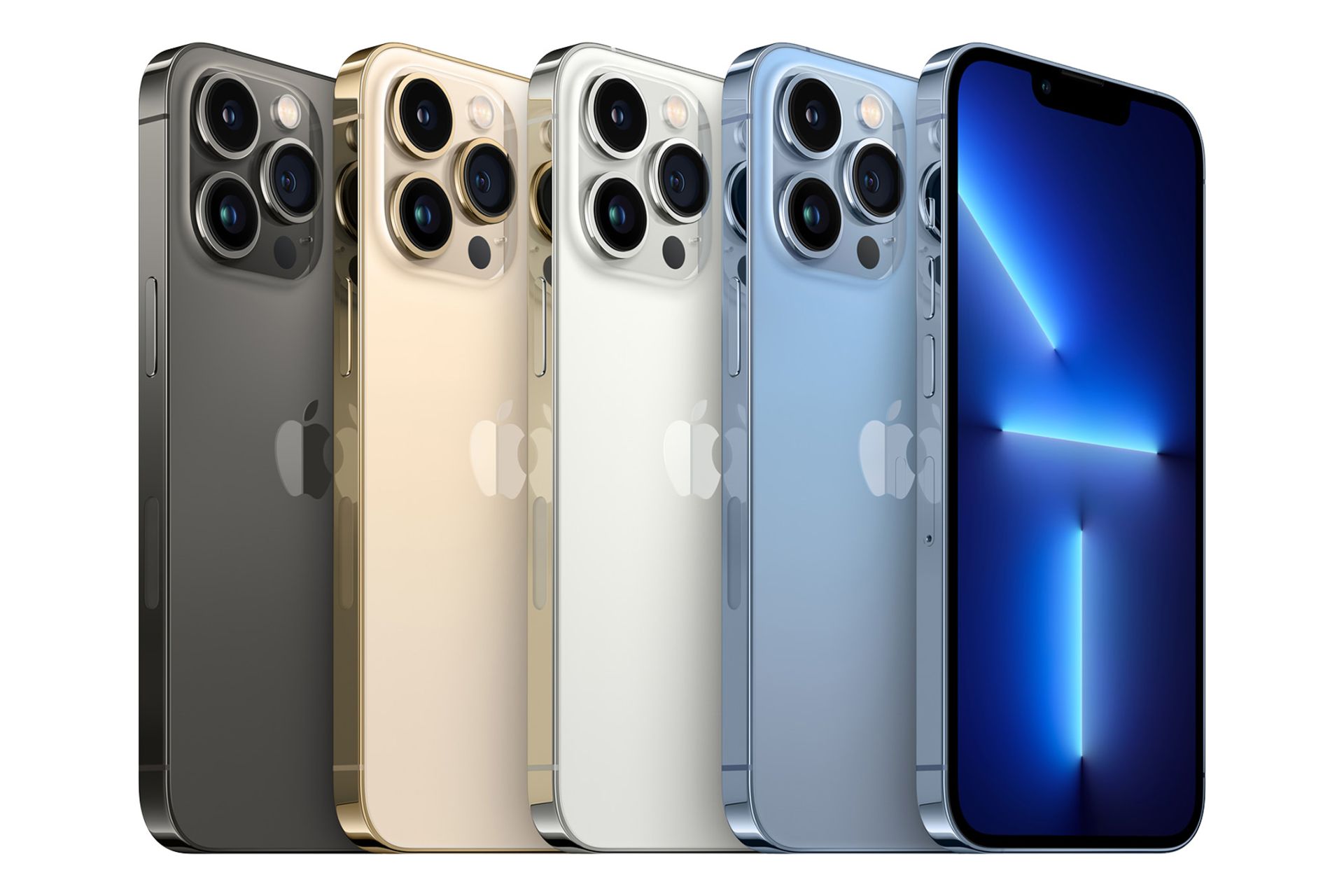
The iPhone 13 could easily be the “S” model of the iPhone 12 series. The cameras have been upgraded with sensors similar to those on last year’s iPhone 12 Pro (but still only had two cameras), and the lenses are placed diagonally (or diagonally) instead of vertically.
The noticeable strength of the iPhone 13 and iPhone 13 mini can be seen as the longer battery life compared to the previous generation. Also, from this point on, Apple removed the basic 64GB internal storage from its flagships and offered them a minimum of 128 GB.
Of course, the screen cutout width of this model was reduced by about 30% compared to the iPhone 12, and the weight of the phones also increased a little. However, these changes were too subtle to be able to distinguish the design of this series with a special feature.
The iPhone 13 could be the “S” model of the iPhone 12 series
Although the success and sense of luxury of Apple products remained constant since 2020, most loyal users of this brand rightly asked the question of how many more years should pass before Apple introduces its smartphones with a new and exciting revolutionary design.
In addition to improving processing speed, the progress of iPhone 13 series cameras cannot be denied. The new cameras were optimized to capture better images in low light and cinematic mode for movies and enabled autofocus (similar to portrait mode) for photos.
iPhone 14 series: Dynamic Island

In 2022, Apple replaced the Plus models with the Mini iPhones. In the same year, the third generation iPhone SE was also introduced, with a 4.7-inch screen, which was desirable for users who spent less money on their mobile phones.
The iPhone 14 series was still released with the design principles of previous generations. Two models 14 and 14 Plus were equipped with TrueDepth camera sensors with higher resolution and accident detection capability, but the most important feature of this generation was emergency satellite communication. In addition, for the first time in US phones, Apple removed the physical SIM card slot and opted for eSIM technology.
In the base model of the iPhone 14 series, we did not see an updated chip or the addition of a new telephoto camera. Also, the aluminum frame, the location of the buttons, the stereo speaker, the lightning port, and even the display were all similar to their counterparts in the iPhone 12.
The most important design factor of the iPhone 14 Pro Max was the removal of the notch and the introduction of the Dynamic Island
Like the previous generation, the iPhone 14 used a 6.1-inch Old Super Retina XDR display with a resolution of 2532 x 1170 pixels and a pixel density of 460 and 476 pixels. But the most important change in the design of this generation was the removal of the notch in Promax models.
Thus, Apple placed the selfie camera and Face ID equipment in a capsule-shaped cavity and called it Dynamic Island. The size of this hole was changed digitally to show different status indicators and notifications to users in a more creative way by using software magic.
iPhone 14 Pro and iPhone 14 Pro Max are equipped with a new 48-megapixel sensor that supports ProRes RAW photos. In addition to black, this model was also available in dark purple.
iPhone 15 series: Say goodbye to the Lightning port and focus on the environment
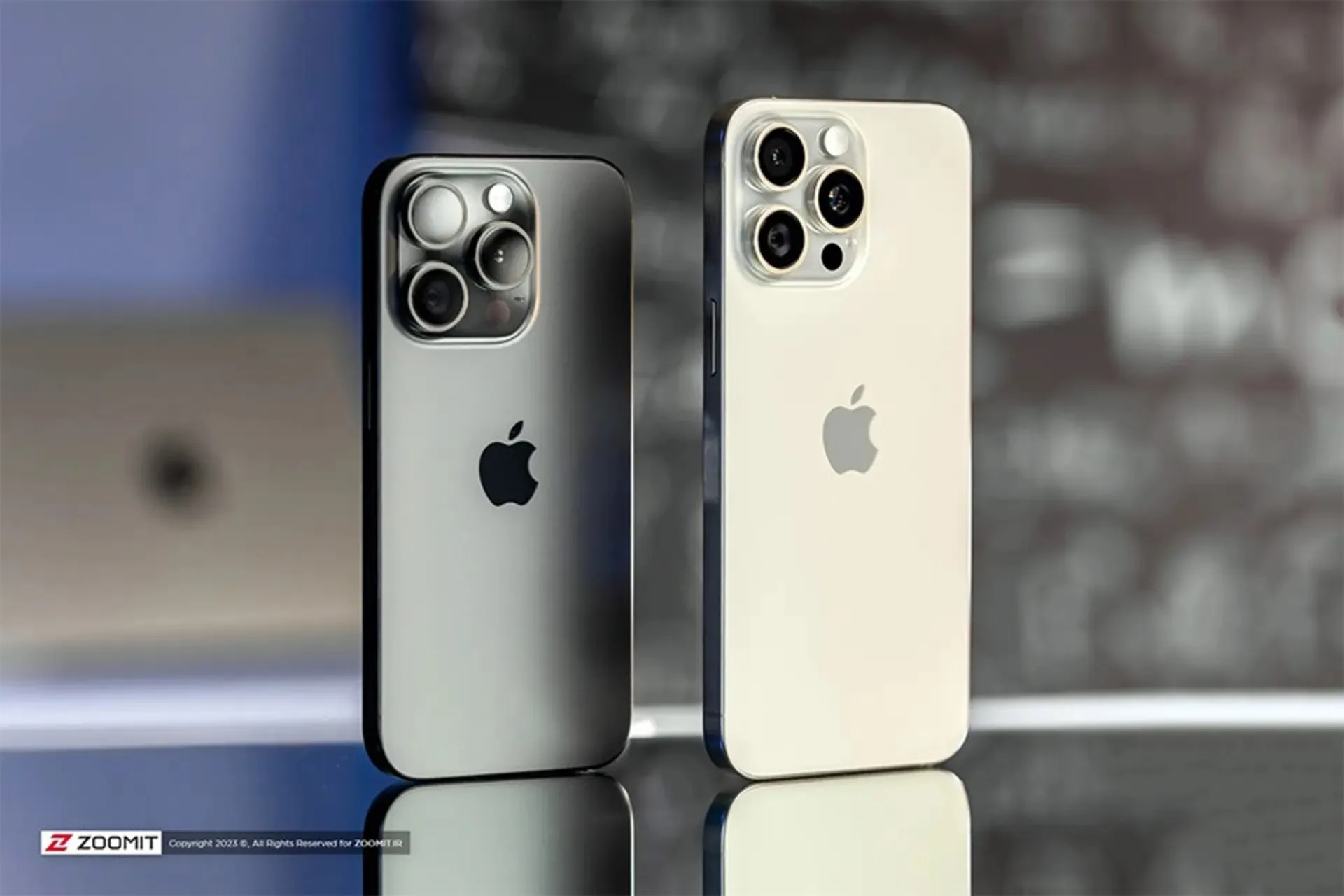
Apple developed the Dynamic Island feature in all models of the iPhone 15 series and announced that in line with the company’s commitment to environmental responsibility, the new products use 100% recycled cobalt in the battery and 75% recycled aluminum in the body.
The iPhone 15 Pro and iPhone 15 Pro Max had the same 6.1-inch and 6.7-inch screens as the previous generation, with the difference that the bezels were reduced to keep the screen size intact despite the slightly smaller dimensions.
The front and back of the device were made of Ceramic Shield material, which Apple has always introduced as the strongest glass in the mobile industry. These two phones were released in black, white, blue, and titanium (grey) colors.
iPhone 15 brought the personalization experience of Apple smartphones to a new level with the action button.
Saying goodbye to the Lightning port after 10 years and replacing it with a USB-C port is one of the most important changes of the iPhone 15. Also, reducing the weight of the phones thanks to the resistant titanium frame and the slight curvature at the edge of the frames, along with the narrowing of the screen border, provided a much more pleasant user experience for the audience.
Finally, the slide button was replaced with an action button to elevate the iPhone customization experience to new levels with different shortcuts.
iPhone 16 series
According to Apple’s usual routine, the iPhone 16 series will probably be introduced in September of this year and will enter the market in the fall. Considering the company’s focus on artificial intelligence, which created a lot of noise at the 2024 WWDC event under the name of Apple Intelligence, we expect the main changes of the iPhone 16 series, both in terms of design and in terms of processor and hardware, to be based on this technology.
According to early reports, the base models of the iPhone 16 will retain some of the design elements of the iPhone 15 and iPhone 15 Plus, and the dimensions will remain the same. Probably the most obvious change in the appearance of the new models will be the vertical arrangement of the rear cameras, which are supposed to enable 3D video recording.
Also, replacing the mute button with the action button and applying the capture button to quickly call the camera will be other significant changes in the iPhone 16 series.
In a general look at the history of iPhone design, we see that Apple has always tried to maintain a balance between performance and beauty. This unspoken principle is evident in the continuous improvement of the functionality of modern phones of this brand without losing visual appeal.
The design of Apple’s iPhones, with a gradual saturation of innovation and creativity, not only provides a unique user experience to the audience and consumers, but by combining art and technology, it has become a lasting cultural symbol that design teams around the world are inspired by.


You may like
-




What is Kali Linux? Everything you need to know about this popular but mysterious distribution
-

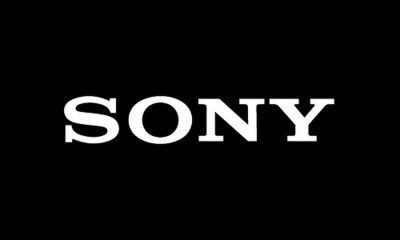


Sony Brand Story; From the production of rice cookers to becoming one of the most famous companies in the world
-




How did the people of the past imagine the future?
-




The story of the Yahoo brand, the story of the fall of a unicorn startup
-

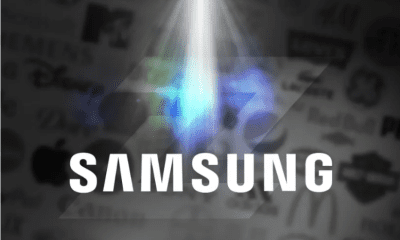


Samsung brand story; Full-view mirror of Korea’s commercial history
-




How to recognize the name of the font from its picture?
Technology
What is Kali Linux? Everything you need to know about this popular but mysterious distribution
Published
1 day agoon
15/09/2024

What is Kali Linux? Everything you need to know about this popular but mysterious distribution
In today’s technology era, as devices and tools become more advanced, their negative and destructive side also become more complex, and as a result, interaction with them requires more care. Currently, with the pervasiveness of the Internet the strong dependence of our daily lives on it, and the emergence of artificial intelligence, cyber threats have also increasingly spread, and the news of hacking various platforms is heard from left and right.
Considering the cyberization of part of people’s lives (entertainment, chat, and earning), the importance of strong cyber security measures cannot be ignored. Kali Linux or in English Kali Linux is a powerful and open-source Linux distribution that is specifically used for penetration testing and digital research and is considered one of the most important tools in the field of cyber security.
 Kali Linux 2024.3
Kali Linux 2024.3
Every techie has probably thought of installing Kali Linux, even via a virtual machine, to poke around and entertain their inner little scientist.
When users first encounter Kali tools, they see strange names such as BeFF Bettercap Hashcat Metasploit, or Nmap, which are almost difficult to guess their use from the name. Overall, Kali is a powerful distribution, and working with it requires a deep understanding of its tools.
What is Kali Linux?
Kali Linux, formerly known as BackTrack Linux, is a Debian-based Linux distribution developed by Offsec. This Linux distribution hosts hundreds of different tools used for penetration testing, reverse engineering, and vulnerability detection of networks and websites.

Due to the fact that Kali is developed based on Debian, it has high stability and security, and its Debian base allows it to benefit from vast software repositories and a similar package management system. In addition, if you are in the category of users who are already familiar with Debian Linux distributions such as Ubuntu, navigating Kali will not be difficult for you; But for users of other operating systems to enter the world of Linux, learning Kali takes more time.
Another important goal of Kali developers is to give the user unlimited freedom to have an open-source and ever-evolving platform and not just be limited to the tools available on the platform. Thus, even the most detailed parts of the software on Kali are open to optimization by the user.
Who uses Kali?
If you are imagining a sequence of Mr. You’re Robot, which depicts a hall full of professional hackers, and the hackers are sitting behind their systems in hoodies, you’re completely wrong. The use of Kali Linux does not require special clothing and there are professional and skilled experts who appear in their company and workplace every day and are responsible for simulating attacks on the network and discovering and fixing its vulnerabilities.
Other people for whom the use of Kali Linux is useful are instructors who plan to train the next generation of white hat hackers and ethical hackers, and Kali Linux is considered the best toolbox for training.
Key features of Kali Linux
Kali Linux has a variety of tools in various categories, including intelligence gathering tools, vulnerability analysis tools, wireless attacks, password mining, and social engineering tools. Do not forget that one of the main foundations of hacking and penetration is social engineering.
 Kali Linux tools menu
Kali Linux tools menu
In Kali Linux, you can use Nmap to scan a network and identify its open ports, Metasploit tool is also provided to exploit a vulnerability, and Wireshark should be used to go deep into the traffic of a network.
Tools like Wifite and Airgeddon are also pre-installed on the Kali platform to check the security of your Wi-Fi network. In fact, Wifite automates the process of cracking WiFi passwords, while Airgeddon provides a convenient environment for assessing wireless network security.
Regardless of the tools and programs that are available by default on the platform immediately after installation, users can install other programs they need by connecting to the Internet by learning how to install the program on Linux.
 Metasploit tool on Kali Linux
Metasploit tool on Kali Linux
The Kali developers have paid attention to every detail and even included a custom kernel kernel for packet injection, which plays a key role when working with Wi-Fi. In addition, all packages are signed with GNU Privacy Guard to assure the user about the security of the platform.
Features of Kali based on the introduction on the official website:
- It is free and will always be free.
- Git is open source.
- It conforms to the Filesystem Hierarchy Standard.
- It is compatible with a wide range of devices.
- It is developed in a safe environment.
- Supports multiple languages; Of course, the platform tools are in English.
- Compatible with ARMEL and ARMHF.
Why is Kali Linux not suitable for everyone?
Kali tools are very powerful and require the same amount of knowledge and experience to use them properly. For example, a normal user might want to scan his home Wi-Fi network and find possible vulnerabilities by installing Kali. But in this process, with Kali’s tools, he creates a problem that has serious consequences for him.
 Installing the program in Kali Linux through the terminal
Installing the program in Kali Linux through the terminal
Suppose you try to execute a script without sufficient knowledge and because Kali is connected to the Internet, this script affects the computer of a certain person or organization. Do not forget that Kali is not designed and optimized for the everyday use of ordinary people and common tasks such as web browsing, editing documents and watching movies.
Go to Ubuntu to satisfy your curiosity and experience the Linux environment
If you are just curious about working with Linux and getting to know the environment of Linux distributions, better options can be found compared to Kali. Usually, the most recommended migration from other platforms to Linux ends up with the Ubuntu distribution, which has a user-friendly interface and a huge support community and runs everyday processes like any other operating system.
Linux Mint is another option recommended for beginners, especially for users who are used to traditional desktops. On the other hand, Windows users usually associate more with Zorin OS. These distributions are all developed for everyday use and perform tasks such as web browsing, editing documents and even running games very well.
Getting started with Kali
Finally, if you decide to install Kali Linux, you should download it from the official Kali website. On the Kali website, you can see different versions of Kali for installation in different ways, and according to your conditions and desired installation method, you can download the desired version.
To install Linux distributions, it should be noted that it is possible to install Linux on Flash or that the user can install the desired distribution on the virtual machine. Installing Kali on a virtual machine has the advantage that all events are kept in isolation and no damage is done to the user’s main operating system.
The Kali Linux distribution is considered the most popular platform for hackers and is designed for specific purposes where everyday use is not among its goals; Therefore, it is not necessary to install it for specialized work and of course to meet the needs of curiosity, but for normal use it is recommended to go for other distributions of Linux.
Dear Zomit users, what is your opinion about the user experience with Kali Linux? Do you recommend installing it?
fashion
Sony Brand Story; From the production of rice cookers to becoming one of the most famous companies in the world
Published
1 day agoon
15/09/2024

Noun: Someone who assists () a goal.
Sony brand story; From the production of rice cookers to becoming one of the most famous companies in the world
Sony is a Japanese multinational company headquartered in Minato, Tokyo. This company provides electrical services, gaming, entertainment, and financial services.
Sony is known as one of the pioneers in the production of electrical products and in recent years it has improved its position among the top companies in the world. Sony consists of many subsidiaries, the most famous of which are Sony Pictures, Sony Music, Sony Mobile, Sony Entertainment, and Financial Holding.
The story of the formation of the Sony brand
Masaru Ibuka returned to Tokyo from World War II in September 1945 to start a new job in the Japanese capital. He set up his workshop in an old, war-torn building with only eight employees. Their initial office walls were full of cracks and had no windows, but over time as their business progressed, the office building also improved.
In October of that year, Ibuka and his group launched a new company called Tokyo Tsushin Kogi, or Tokyo Institute of Communications Research. At that time, everyone was eager to work in the new company and wanted to use their engineering knowledge to rebuild Japan. However, no one knew where to start. Most of the employees were paid from Ibuka’s small savings and they had to work hard to survive.
The story of the formation of Sony goes back to 1945; When Masaru Ibuka returned from World War II
At that time and during the Second World War, people were thirsty to hear the news of the day. As a result, they came up with an interesting idea that changed the fate of the company forever. Most of the radios at that time were either destroyed by the war or could not receive radio waves due to police interference.
The Ibuka company repaired broken radios and also made it possible to receive waves using a series of converters. It didn’t take long for this model of radio to gain many fans among people.
Their business was in the center of attention and for this reason one of the Japanese newspapers published an article about them. This article not only got them more customers but also brought Ibuka’s old friend, Akio Morita, closer to him.
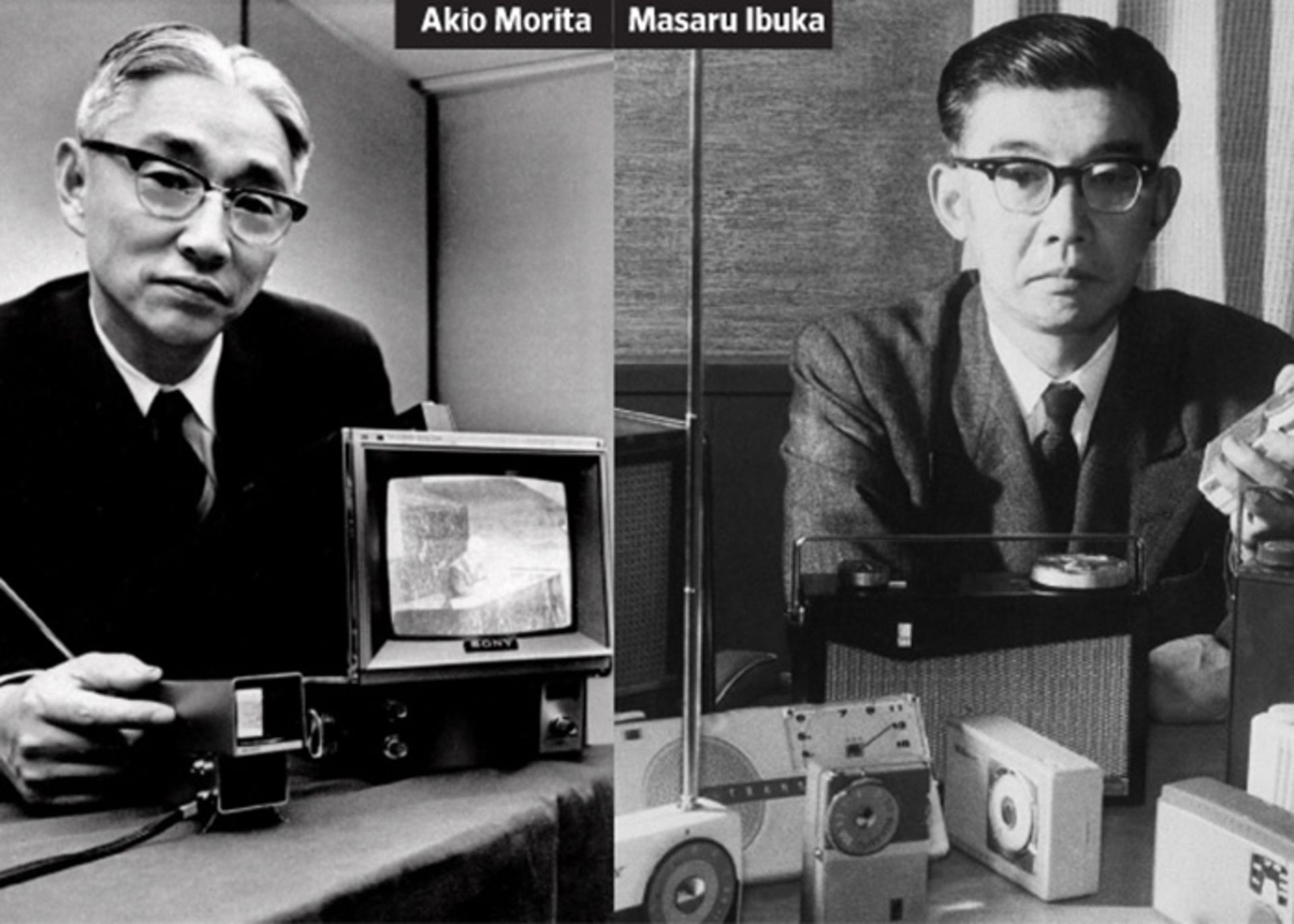
Ibuka and Morita, the founders of Sony Corporation, first met on a research committee studying new types of war weapons.
After some time passed, despite the big age difference, a deep friendship between Ibuka and Morita was formed. After the end of the war, Morita returned to his hometown and the communication between them was cut off. Until one day he read his friend’s name in a newspaper article and called Ibuka. Ibuka also asked him to get to Tokyo as soon as possible to start working with him again.
Sony’s brand name was originally supposed to be TTK or Totsuko
They were looking for a new name to advertise their company globally. Their intention was to choose the abbreviation of the company’s name, TTK, for advertising, but this name was already used. The word Totsuko was also another suggested name. But during his trip to America, Morita realized that it is difficult for Americans to pronounce this name.
They finally chose the name Sony from the combination of 2 words Sonus meaning sound and Sonny meaning young boy. Their purpose in choosing this name was to pronounce it in the same way in all languages of the world.
The company’s first product was a rice cooker, which, contrary to expectations, failed to meet expectations and failed. They did not get discouraged after their first failure and devoted more money to research. They focused on developing products that would benefit the Japanese people.
Sony; The first brand
During 77 years of operation, Sony has been able to launch the first product in many markets of the world. From Japan’s first tape recorder to Japan’s first transistor radio and other products.
Tape recorder

In 1950, the first Japanese tape recorder was made from its American model. This device was also not well received until Sony released a translated version of 999 Ways to Use the tape recorder.
After people became familiar with the product’s uses, the purchase request increased and the Sony tape recorder sold well. The demand for this product increased so much that the company had to expand its facilities to produce orders.
Transistor radio
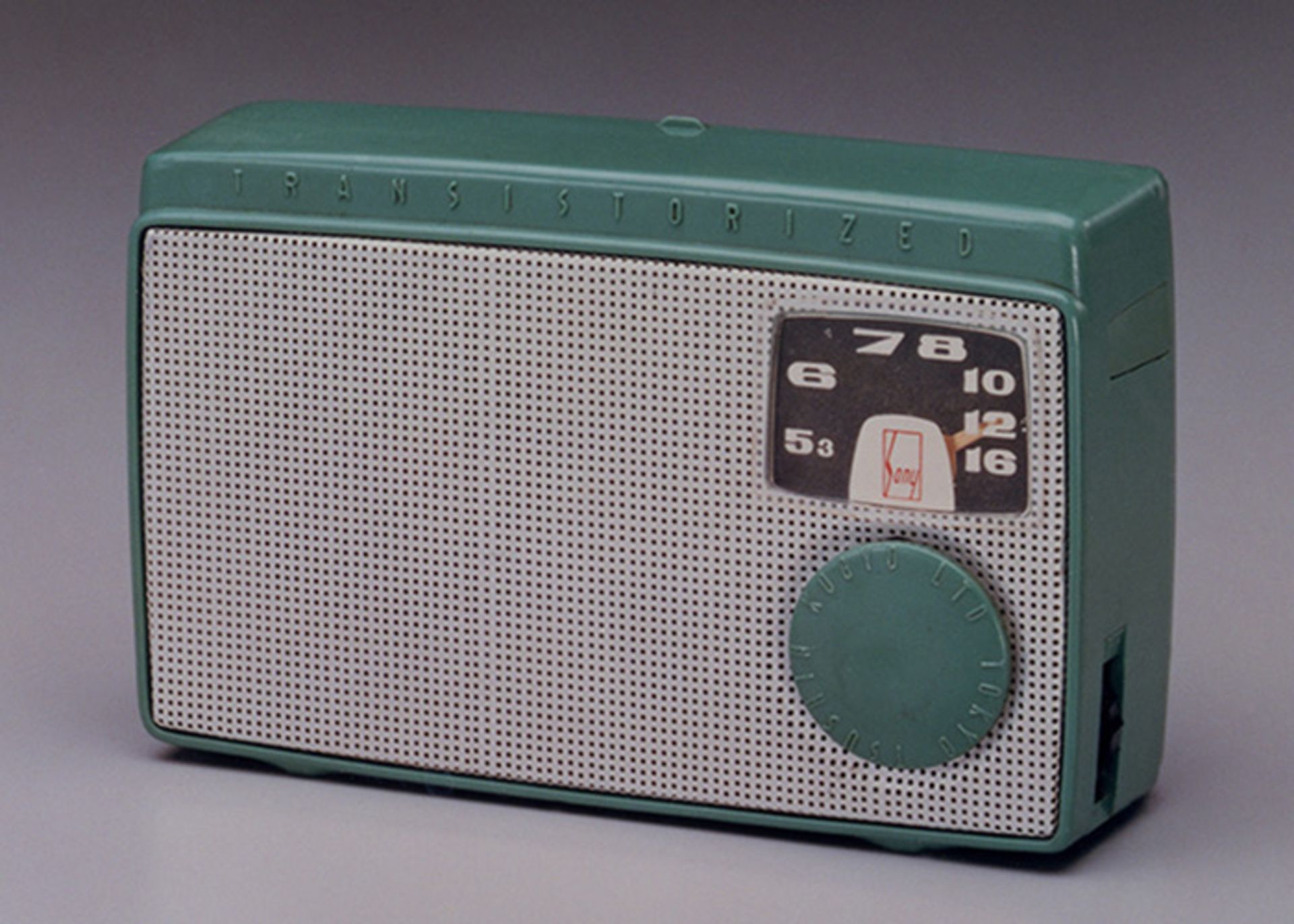
Japan’s first transistor radio was introduced in 1955 by Sony.
Portable TV
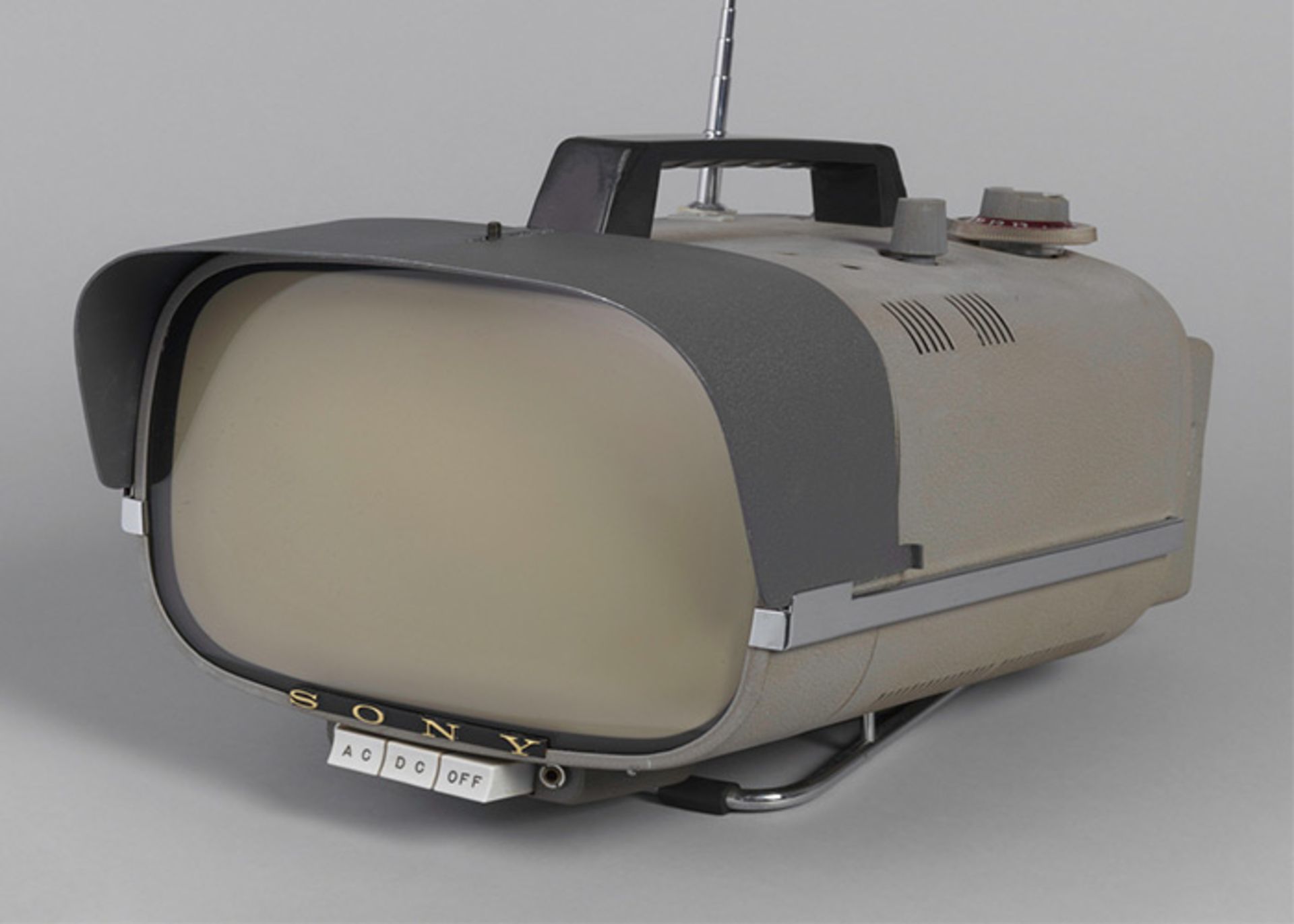
In 1960, Sony released the world’s first portable transistor TV. Sony used radio technology to produce this device.
The televisions of that time were big and in every house, a specific room was reserved for them. But these products brought a new definition of personal televisions to the market.
Video tape player
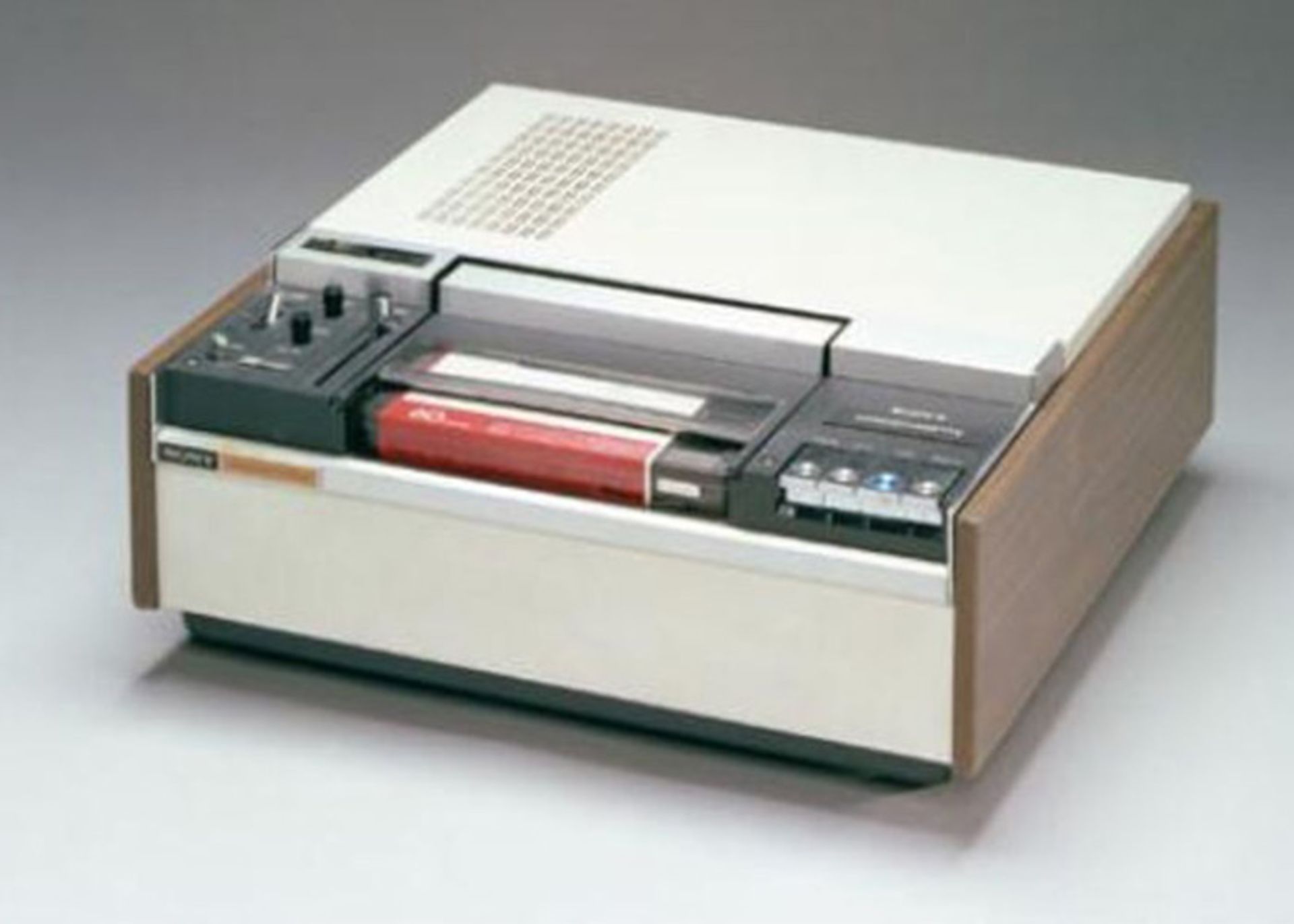
In 1971, Sony unveiled another product. This player was able to show videotapes in color inside the TV.
Masaru Ibuka retired in 1976 and was succeeded by Akio Morita as CEO.
The first generation Walkman

In 1979, Sony launched the first generation of Walkmans. These devices were portable and customers could listen to their favorite cassettes anywhere.
Many employees of the company believed that this device could not become popular among people without the ability to record sound. But contrary to their belief, this device introduced a new and successful lifestyle among people and achieved remarkable success.
The first CD player
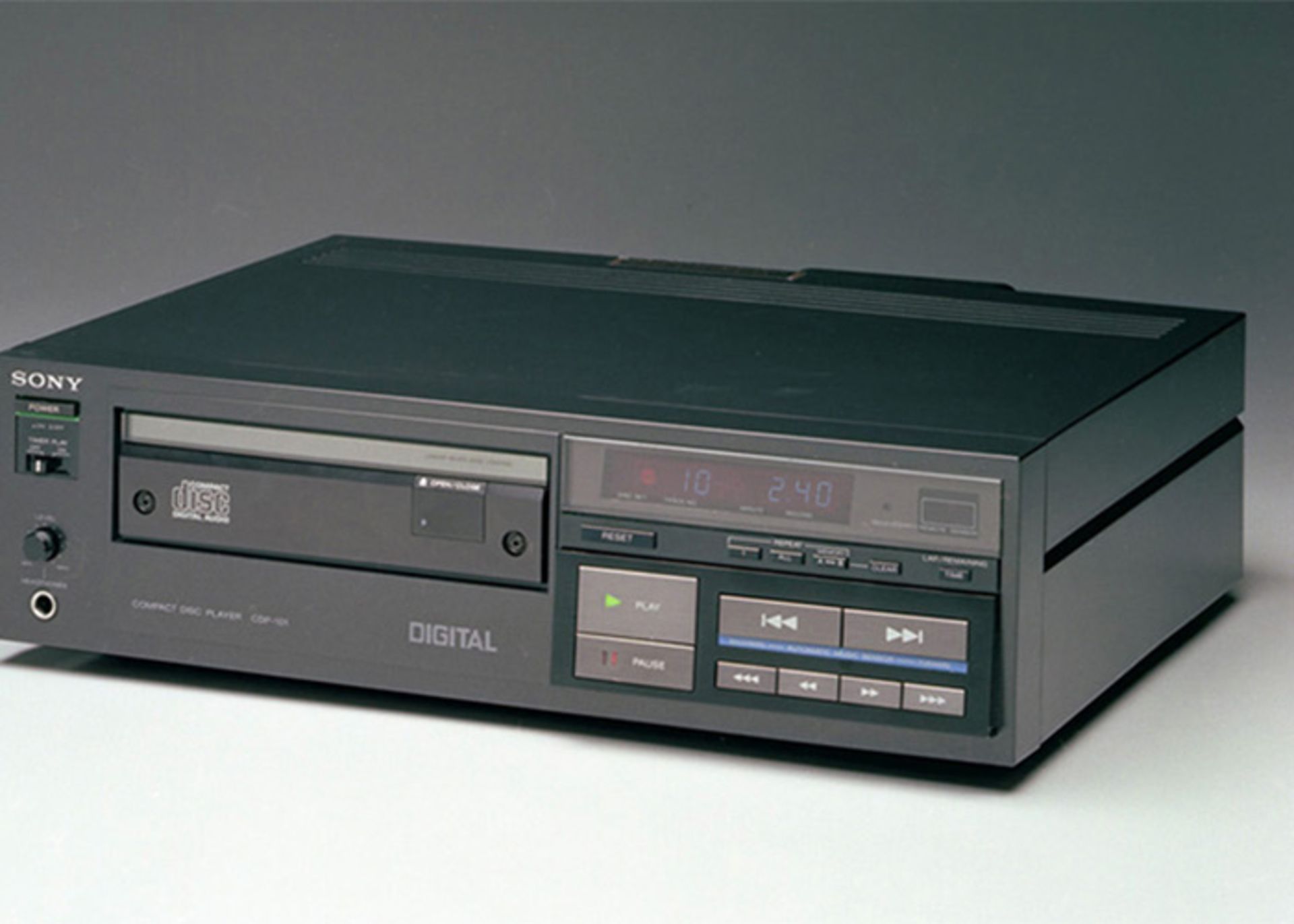
The world’s first CD player was launched in 1982 by Sony.
One of Sony’s senior managers, Norio Oga, was elected as the company’s CEO in 1989. Sony bought Columbia Pictures in the same year. This action was considered the biggest purchase of a Japanese company at that time.
PlayStation
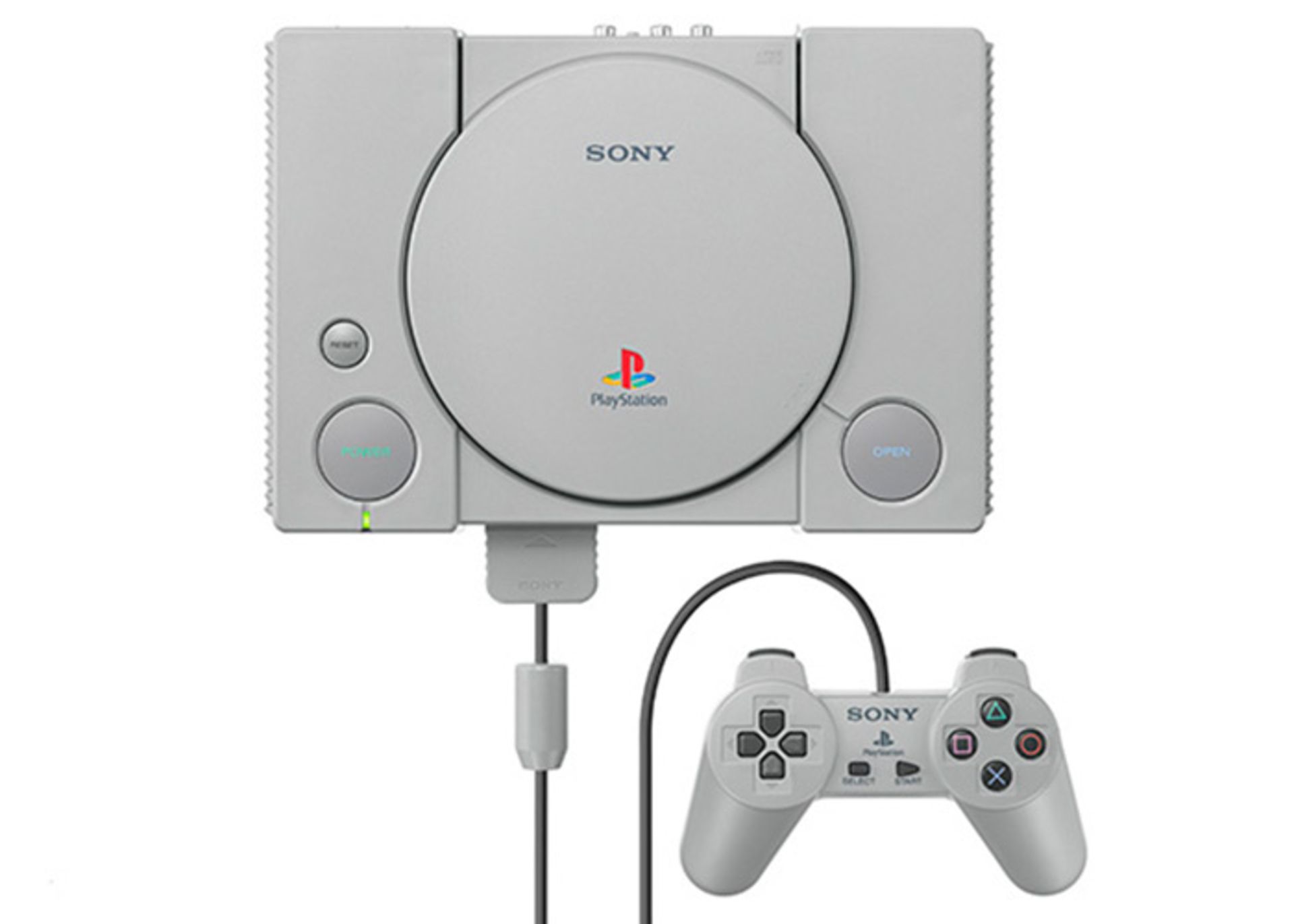
PlayStation is another important product of Sony. This product was sold in the Japanese market in 1994 and entered America and Europe in 1995.
PlayStation became so popular among people that its sales reached 10 million units by the end of 1996, and in 1998, about 50 million of this console had been sold. The production of new models of this product continues and today PlayStation 5 is considered the newest Sony console.
Digital camera
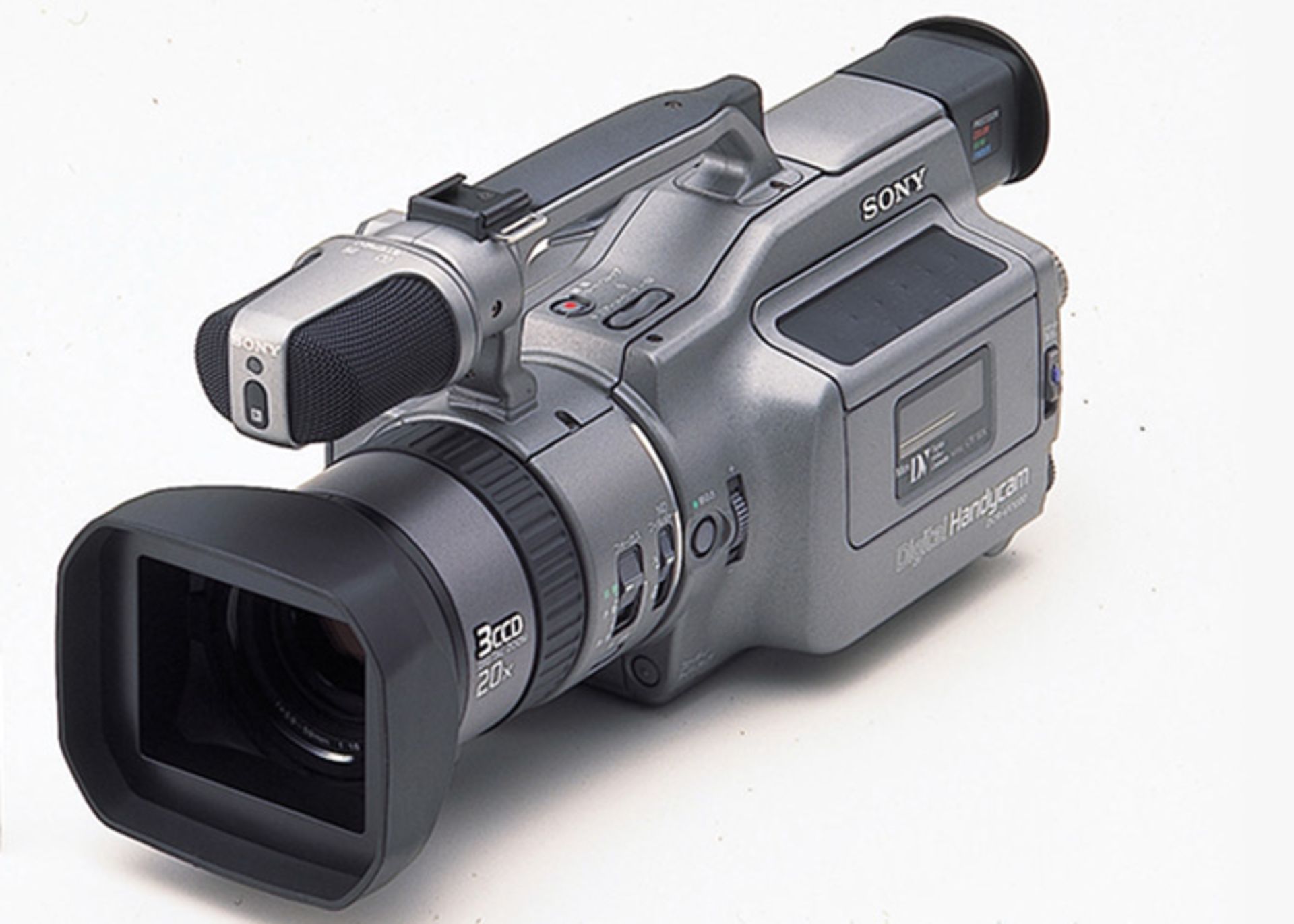
The first digital camera was launched by Sony in 1995. This device was very well built and recorded high-quality videos.
Sony Mobile
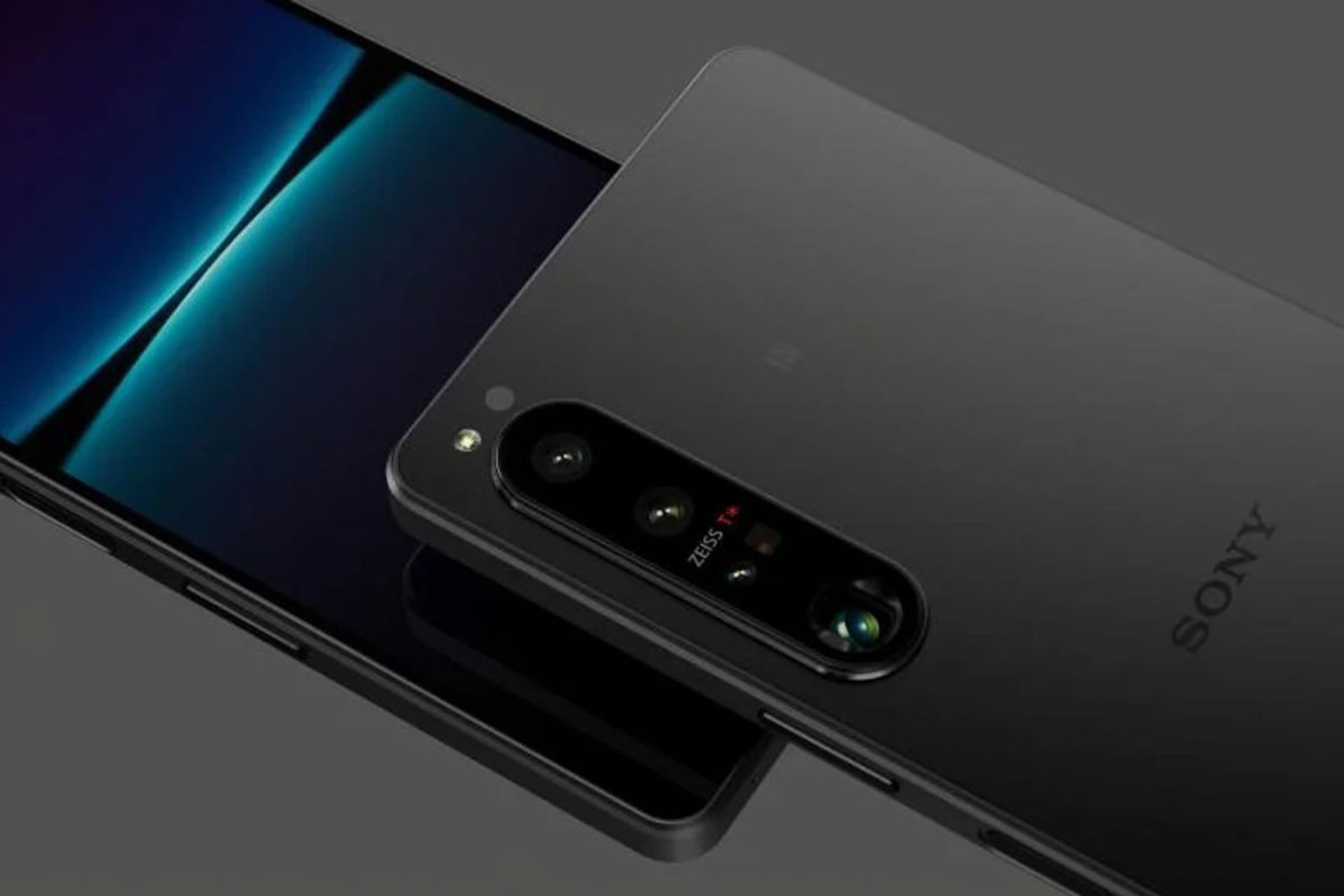
Sony Mobile Company started working in 2001 in cooperation with Ericsson. The company’s products were first marketed under the name of Sony Ericsson until Sony bought Ericsson’s shares in 2012. Since then, the phones of this company have entered the market under the name of Sony.
In 2012, Sony was able to win the title of the fourth mobile phone manufacturer. Xperia series mobile phones are the current flagships of this company. The Xperia brand doesn’t sell much at the moment, but Sony continues to produce products.
Vaio laptop
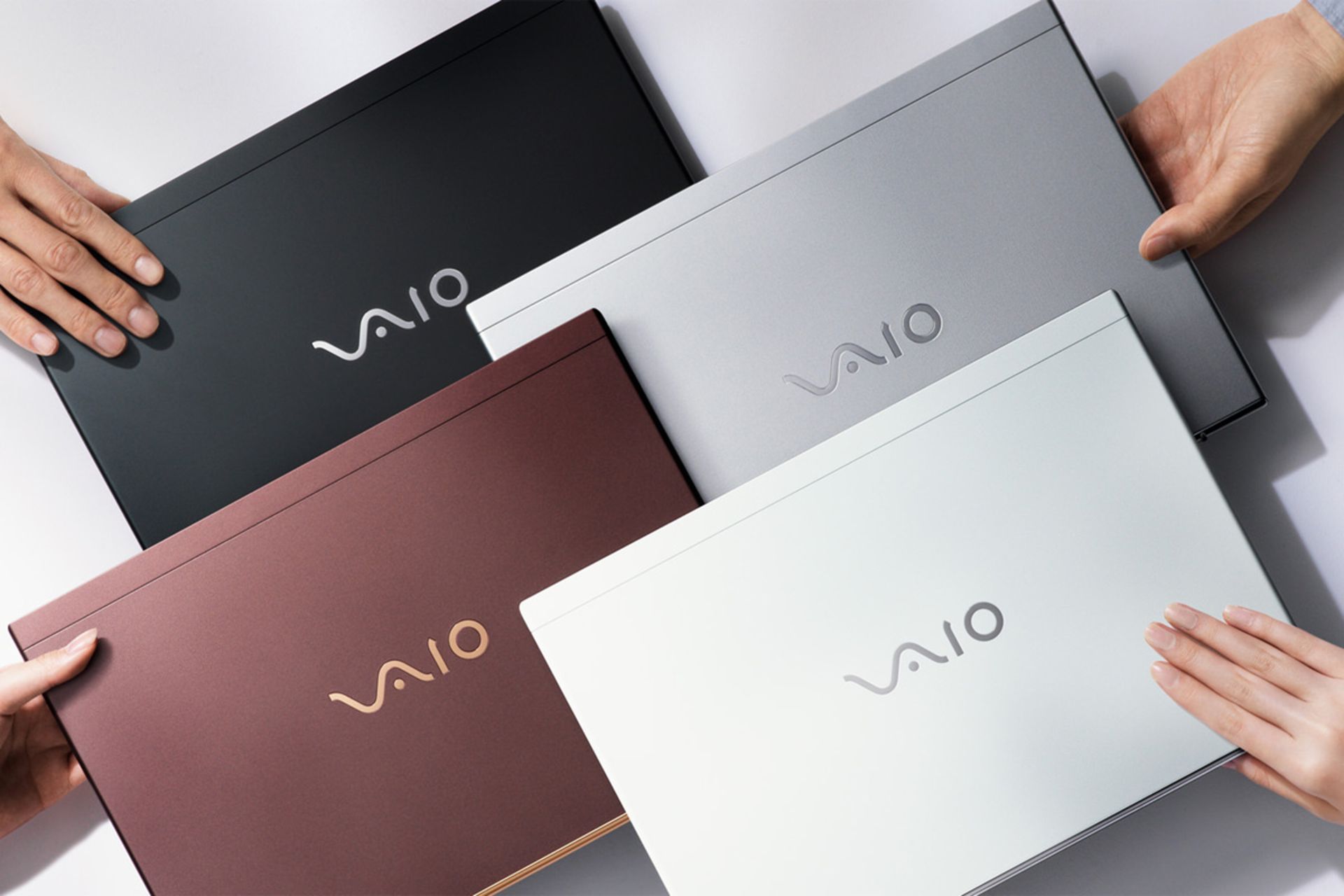
The first generation of Vaio laptops was launched in 1997. These laptops had a slim body and introduced a new concept of personal computers to the world.
Personal life of Masaru Ibuka

Masaru Ibuka was born on April 11, 1908 in Nikko, Japan. He graduated from the university in 1933 and worked in a film production company. Ibuka joined the Navy during World War II and was a member of the investigative committee; But after some time in 1945, he left the war to start his own radio repair workshop in Tokyo.
At that time, people followed the news of the world through the radio. As a result, starting a radio-related business was a good idea for a company. Ibuka and Akio founded Sony in 1946. Ibuka used transistors to make his company’s products. Therefore, Sony was introduced to the world as one of the first companies to use this technology for non-combat purposes.
Ibuka was a member of the Navy during World War II
In 1976, Ibuka was awarded an honorary doctorate from the University of Tokyo. He received two other honorary doctorate degrees in 1979 and 1994 from Tokyo and American universities.
Ibuka published a book titled “Kindergarten is Too Late” in 1971. In this book, he claimed that the most important time for human learning is from birth to three years old. As a result, he has suggested ways to teach skills to children at this time.
Ibuka was the leader of Sony until 1976 and then he retired; But even after that, he had a close relationship with company managers and guided them. He died in 1997 at the age of 89 due to heart failure.
Personal life of Akio Morita
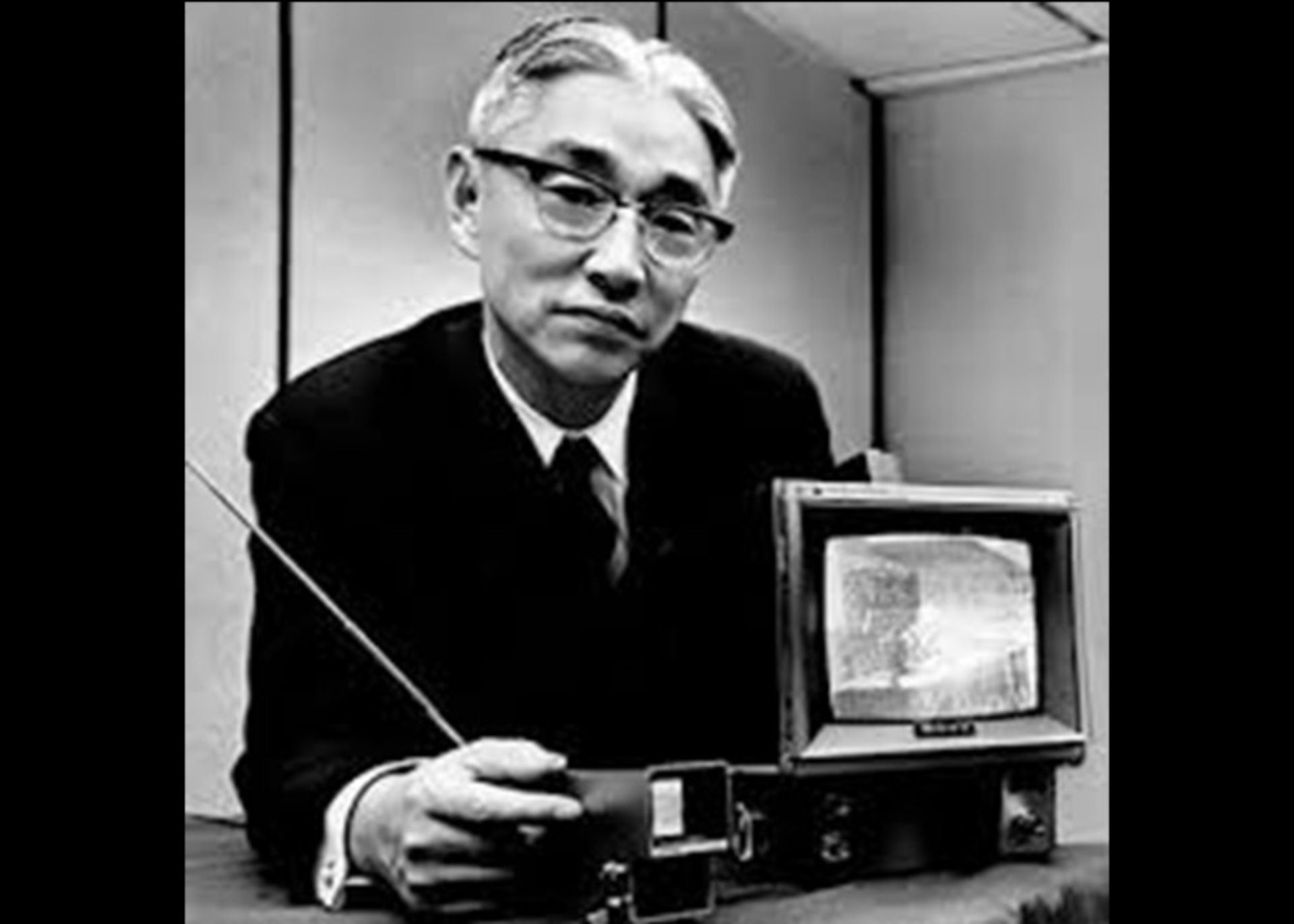
Akio Morita was born on January 26, 1921 in Japan. He was the eldest of his four siblings. As a result, his father trained him to manage the family business.
Akio was very interested in mathematics and physics and graduated from university with a degree in physics. During World War II, he became a member of the Japanese Army’s Research Committee, and while serving, met his future business partner, Masaru Ibuka.
Morita was a huge fan of all Sony products and worked hard to promote them. For example, the size of their first production radios was slightly larger than the standard shirt pocket size. Because they wanted to market their products as pocket radios, Morita made shirts for their employees with larger pockets to show customers that these radios were pocket radios.
Sony established its first branch in America in 1960. Sony was the first Japanese company to enter the US stock market. In 1994, Morita suffered a stroke while playing tennis and resigned from the chairmanship of Sony. He finally died of pneumonia in 1999 at the age of 78.
Sony failures
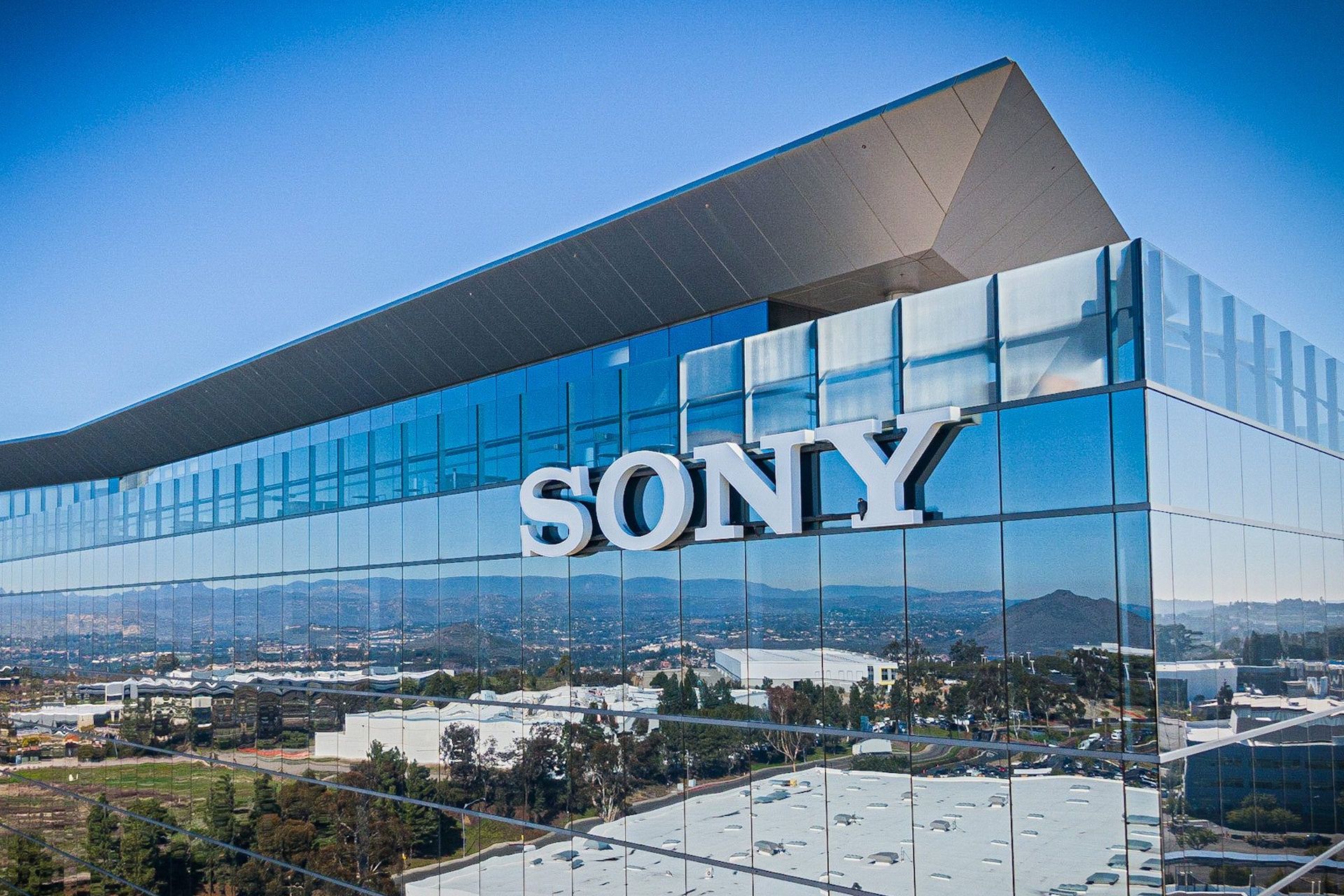
Since its establishment in 1964, Sony has produced successful and innovative products. Many of these products were entering the market for the first time, and as a result, they introduced a new concept of technology to the world; But no success story is without failures.
Sony Aibo

Sony robots were launched in 1999. These robots were in the form of cute dogs and had the power to learn. These robots could show emotions such as happiness, sadness, anger, surprise, fear and disinterest.
Sony robots were sold at a price of $2,500 and were very popular among their owners. But its high price prevented it from increasing its popularity and eventually, Sony stopped production.
Vaio music device
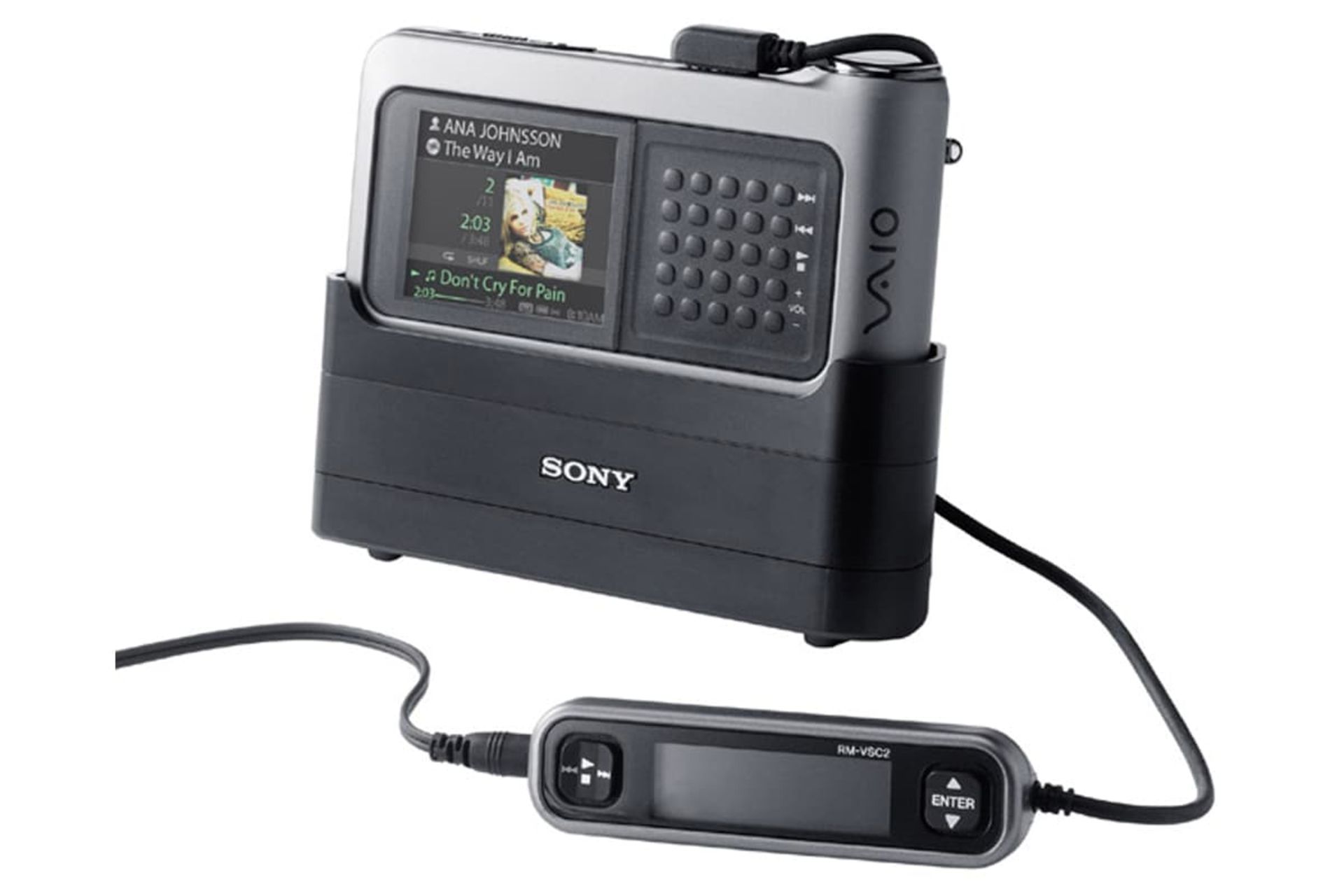
In 1979, Sony introduced a new concept of portability to the market by presenting its Walkman. The company had been Apple’s fierce competitor in digital music for two years, but its first product did not perform well.
The biggest mistake of the company was the dependence of files on the ATRACT format. Files with this format could only be used in Sony minidiscs. The ability to share files was the first word in digital music in 2000, and all files were released in MP3 format. As a result, this issue became a big challenge for Sony.
Sony e-Villa
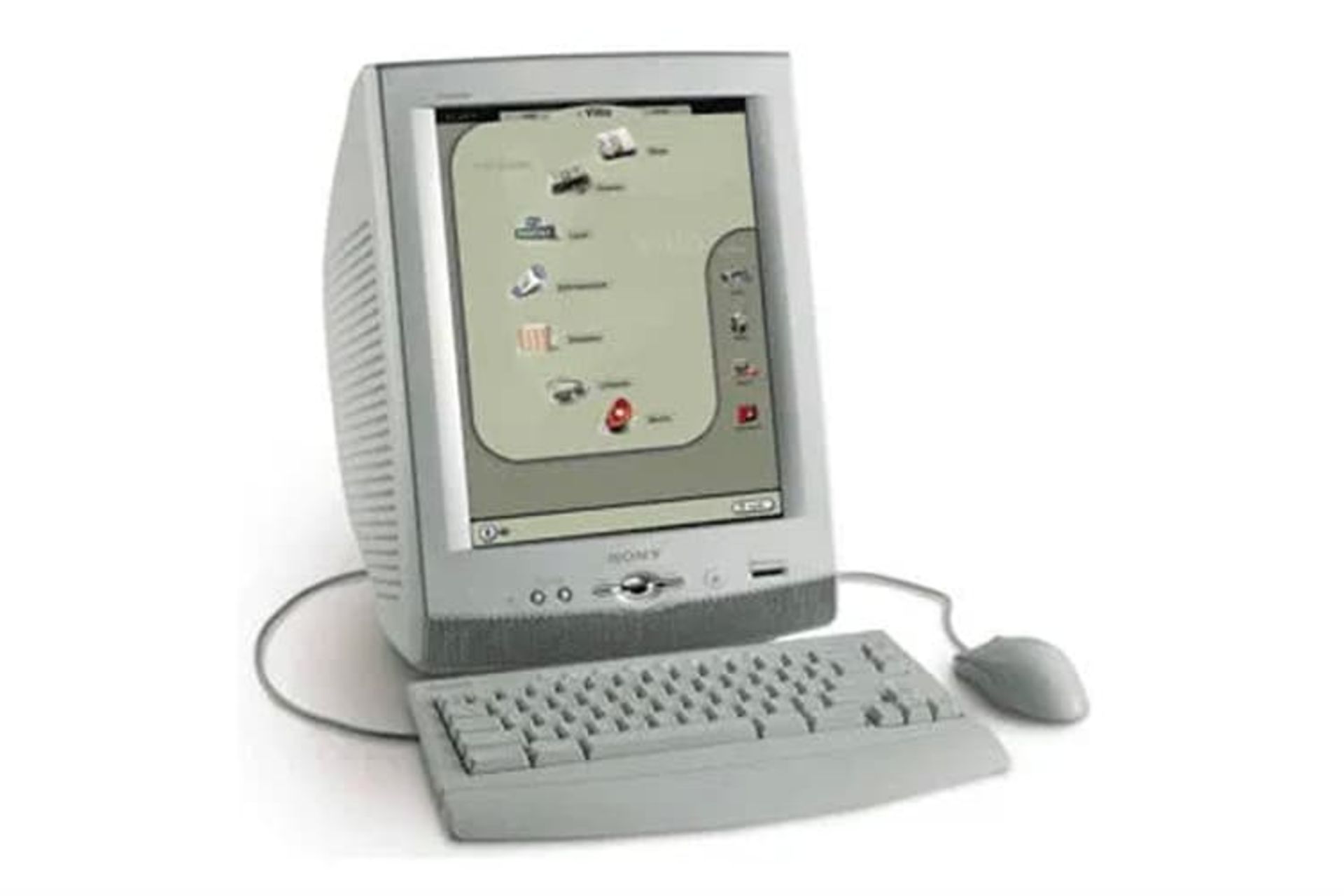
In 2001, many companies were offering Internet home appliances, including dedicated terminals for accessing the Internet and web browsers. Sony e-Villa was also a product that was launched with the same purpose.
The e-villa had a 15-inch monitor and a 56 kbps dial-up modem. e-Villa was designed to have access to email services and websites. At that time, there was a lot of competition between these devices and people preferred to use devices with Windows XP. As a result, Sony stopped the production of these products after three months.
Sony Airboard
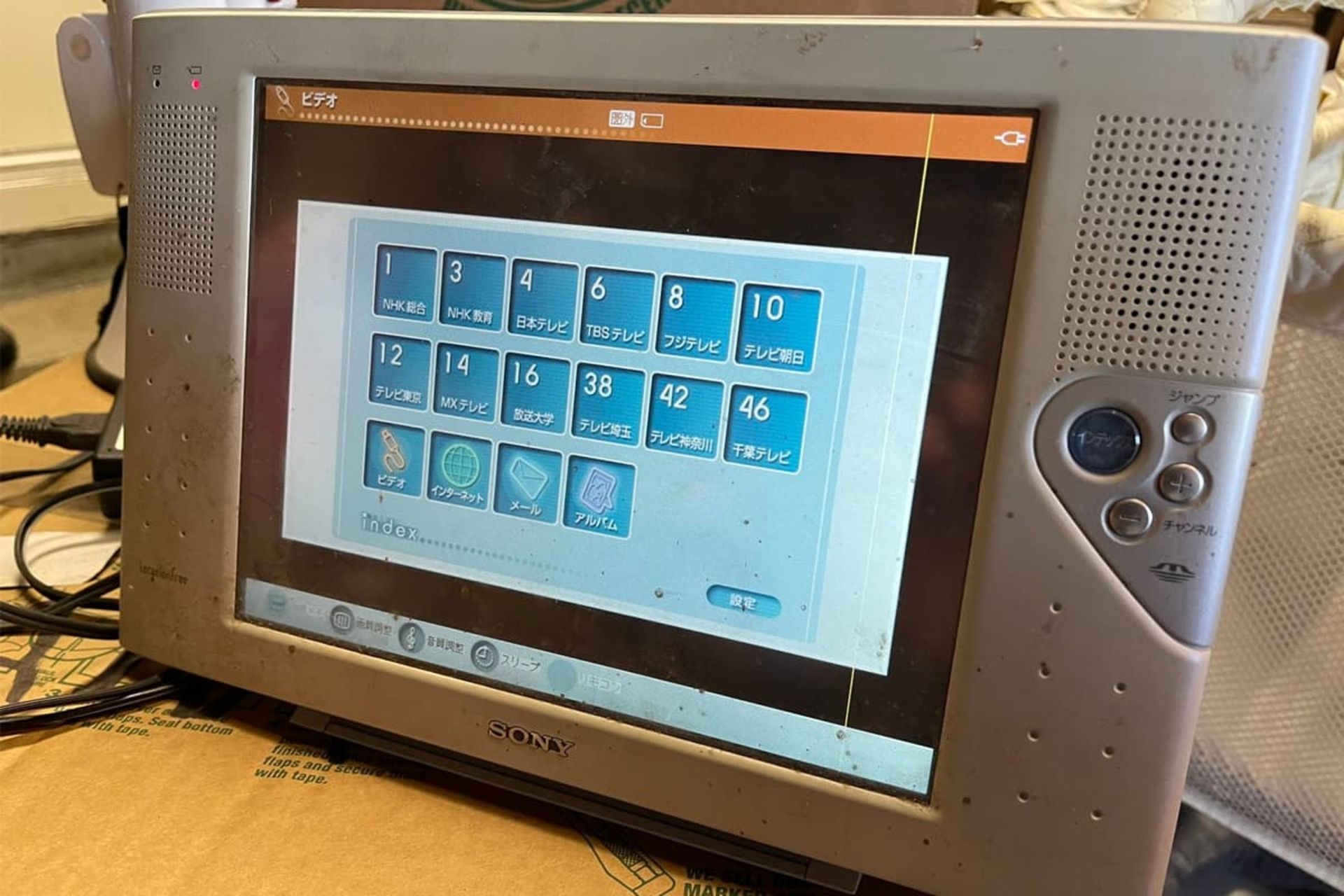
10 years before people became interested in watching videos on tablets, Sony launched a device called Airboard. The tablets of this family were 10 inches and had the possibility to connect to Wi-Fi and broadcast TV channels.
Using the picture-in-picture feature, users could search the Internet and watch TV. This device never caught on because people thought it was just a portable and expensive TV. Therefore, its production was stopped before entering the American market.
Sony PSX
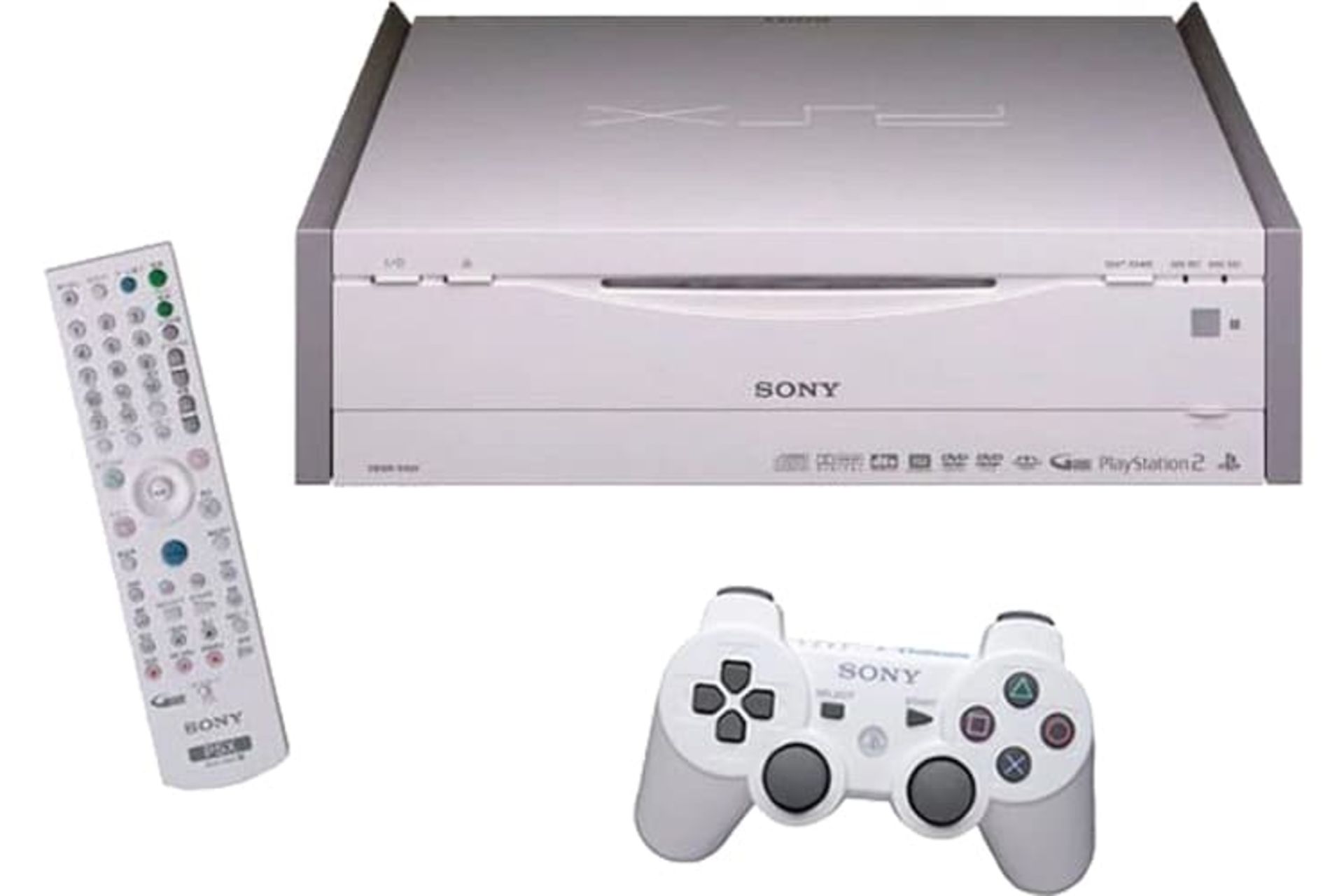
In 2003, Sony combined its two products, the PlayStation 2 and the video recorder, and marketed it as a single product. Using this product, customers could record the TV show on the storage memory or DVD at the same time as the game experience.
But the PSX, which was released only in Japan, was much larger and heavier than the PlayStation. Although this product did not have a high price, it could never attract many customers.
The current state of the Sony brand

Sony is one of the largest Japanese companies by revenue. The company reached the peak of profitability in the 1990s and 2000s due to the launch of its PlayStations, but faced financial problems in the late 2000s.
Read more: Samsung brand story; Full-view mirror of Korea’s commercial history
The global financial crisis, increased competition with PlayStation, and the earthquake in Japan in 2011 went hand in hand with Sony experiencing major failures for three years.
Due to the negative effects caused by natural disasters and exchange rates, the Times magazine called Sony a lack of flexibility and inability to measure the economy, but Sony was able to overcome all the crises in all these years by using innovation and became one of the top companies in the world. become in the television industry.
Sony’s current slogan is Be Moved, and the company aims to emotionally excite its customers with every product it offers.
Sony was able to pocket an operating profit of 1.21 trillion yen (about 8.9 billion dollars) in fiscal year 2022, which is a new record. Sony’s revenue in the final quarter of last year grew by 35 percent to about 3.06 trillion yen ($22.5 billion).


Adjective: The greatest; the best.
Pronoun: The greater part of a group, especially a group of people.
Noun: The greatest amount.
Noun: The greater part.
Noun: A record-setting amount.
How did the people of the past imagine the future?
How can you explain to people in the 1900s that a robot can sweep floors and carpets without any intervention by drawing a map of your house without sounding crazy?
To people of the last century, our technology today seems like magic; But that doesn’t mean they didn’t fantasize about what the future would be like. Many inventors and artists have depicted their own predictions of future technology. Let’s look at these paintings and then comment on their scope.
 Bird postman – 1892
Bird postman – 1892
The potential of human flight was one of the concerns of futurists. It is true that aviation has revolutionized our world, but the type of flying equipment and “flying cars” that captured the imagination a century ago will remain for the future.
One of the important innovations that the minds of the ancients often did not imagine is the Internet and modern wireless communications. In today’s world, the flying postman pictured here would probably be out of a job thanks to plain old email.
 Electric floor washer (electric scrubber) – 1899 | The vacuum cleaner was invented just two years after this image was made.
Electric floor washer (electric scrubber) – 1899 | The vacuum cleaner was invented just two years after this image was made.
The idea of a robot vacuum cleaner, now a reality in millions of homes, was apparently beyond imagination in the late 19th century.
 Machine learning-1901
Machine learning-1901
According to this prediction, teaching was supposed to become a very easy job by the year 2000. The principal simply feeds the history books into the machine, while an assistant (or perhaps a student being punished?) turns the handle and somehow wires the contents of the books to the headsets the students are wearing, and from there into their minds. sends Do you understand the necessity of the presence of the school principal in this process?
 Phone with photo – 1918
Phone with photo – 1918
The arrival of video-calling technology was predicted more than a century ago. The Electrical Experimenter magazine wrote in 1918: “Many inventors have attempted to invent a device or machine by which one person can see another while talking on the telephone.” According to the author of the magazine, such a device, which should naturally be called a “telephot”, will be invented sooner or later, because “everyone would like to have such a device.”
 Video call – 1942
Video call – 1942
Another article in the magazine Practical Electrics in 1942 predicted a similar device with moving pictures so interesting it is admirable.
 wheel of destruction
wheel of destruction
During World War I, specialized technology magazines were full of ideas that were hoped to bring an end to the long conflict. One of these inventions was the gyro-electric destroyer. “This 45-foot monster is steered by a large gyroscope wheel,” Electrical Experimenter magazine reported. “The destroyer travels at a speed of 40 to 60 miles per hour and because of its large diameter it easily rolls over trenches and other obstacles.”

The vision envisions a robot dog that readers can build for themselves; A wheeled device that operates with batteries and follows its owner’s metal cane through a magnet. It may have a cute face but don’t expect this dog to roll over, play, or react if something bad happens to you.
The idea of artificial pets doesn’t seem so strange nowadays. This is a concept that exists mostly in the field of cyberspace, exemplified by digital home assistants and artificial intelligence-based video game characters.
 Climate control – 1954
Climate control – 1954
The dramatic image above shows how future humans will be able to control the weather. This article describes an airplane that is dispatched to disperse a cloud that threatens to form a tornado. “In the age of the hydrogen bomb and supersonic flight, it’s possible that science will find ways not only to destroy tornadoes and hurricanes but also to influence weather conditions in ways that will boggle the imagination,” the magazine reports.
Read more: The future of generative artificial intelligence from its own language
 Food planning by computer – 1967
Food planning by computer – 1967
In 1967, Philco-Ford, a maker of electrical goods, produced a short film called 1999AD, showing how its future products might transform ordinary homes. The family in the film owns a space-age car, a large wall-filling television, and a large home computer that helps the family (specifically the mother) plan their meals. In the film, we see the father of the family using the computer to check the invoice for the clothes he bought online.


Do animals have an understanding of the concept of death?


What is Kali Linux? Everything you need to know about this popular but mysterious distribution


Sony Brand Story; From the production of rice cookers to becoming one of the most famous companies in the world


How did the people of the past imagine the future?


Mammoth and dodo return to nature


Canopus; What do we know about the second brightest star in the sky?


How to use iMessage on Android?


Can humans endure the psychological torment of living on Mars?


Xiaomi Glorimi M2 Max watch review; Alternative economic option for iPhone owners


Artificial intelligence problems; Frauds based on artificial intelligence and methods to deal with them
Popular
-



 Technology1 year ago
Technology1 year agoWho has checked our Whatsapp profile viewed my Whatsapp August 2023
-



 Technology1 year ago
Technology1 year agoSecond WhatsApp , how to install and download dual WhatsApp August 2023
-



 Technology1 year ago
Technology1 year agoHow to use ChatGPT on Android and iOS
-



 AI2 years ago
AI2 years agoUber replaces human drivers with robots
-



 Technology1 year ago
Technology1 year agoThe best Android tablets 2023, buying guide
-



 Technology1 year ago
Technology1 year agoThe best photography cameras 2023, buying guide and price
-



 Humans2 years ago
Humans2 years agoCell Rover analyzes the inside of cells without destroying them
-



 Technology1 year ago
Technology1 year agoHow to prevent automatic download of applications on Samsung phones
